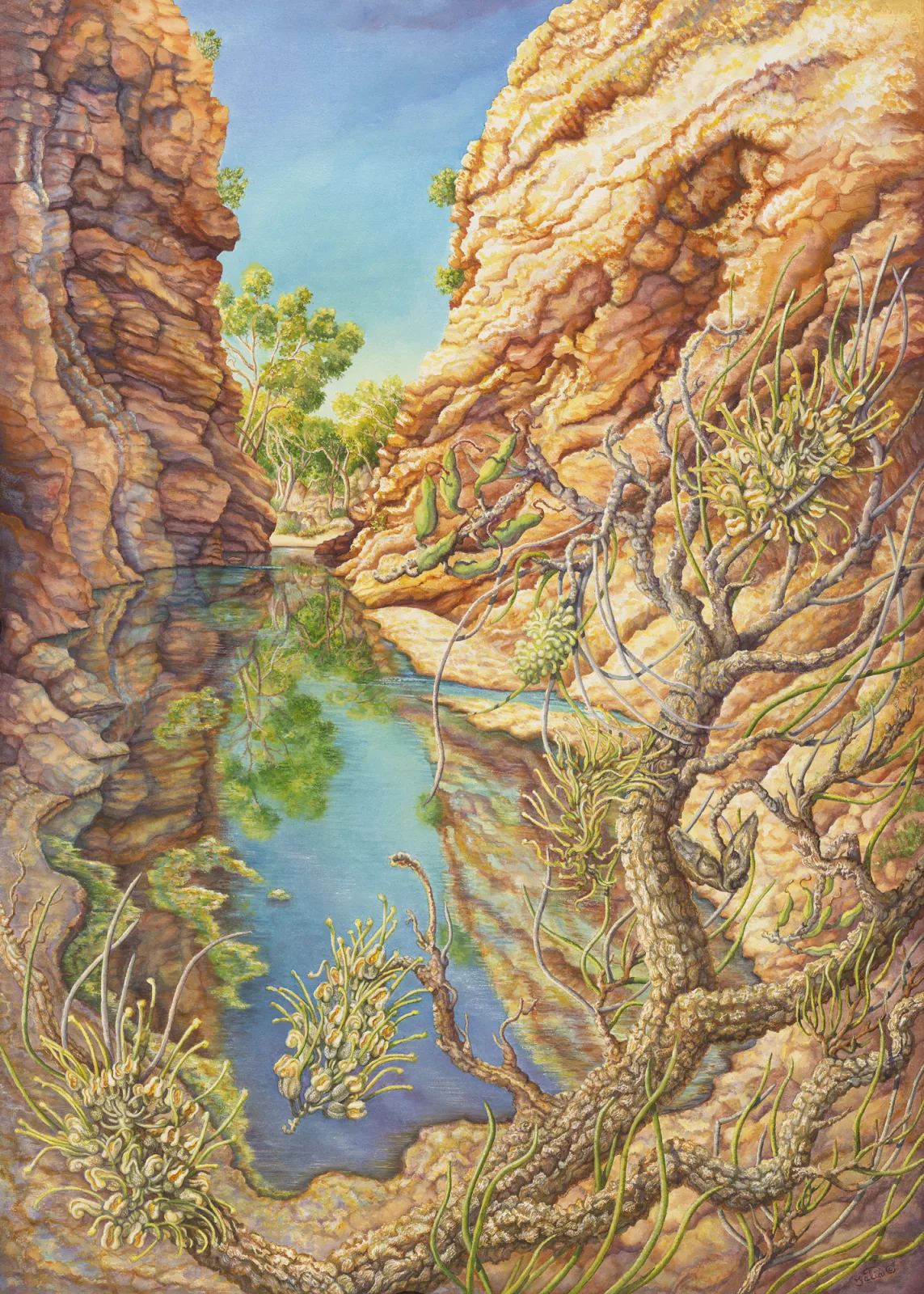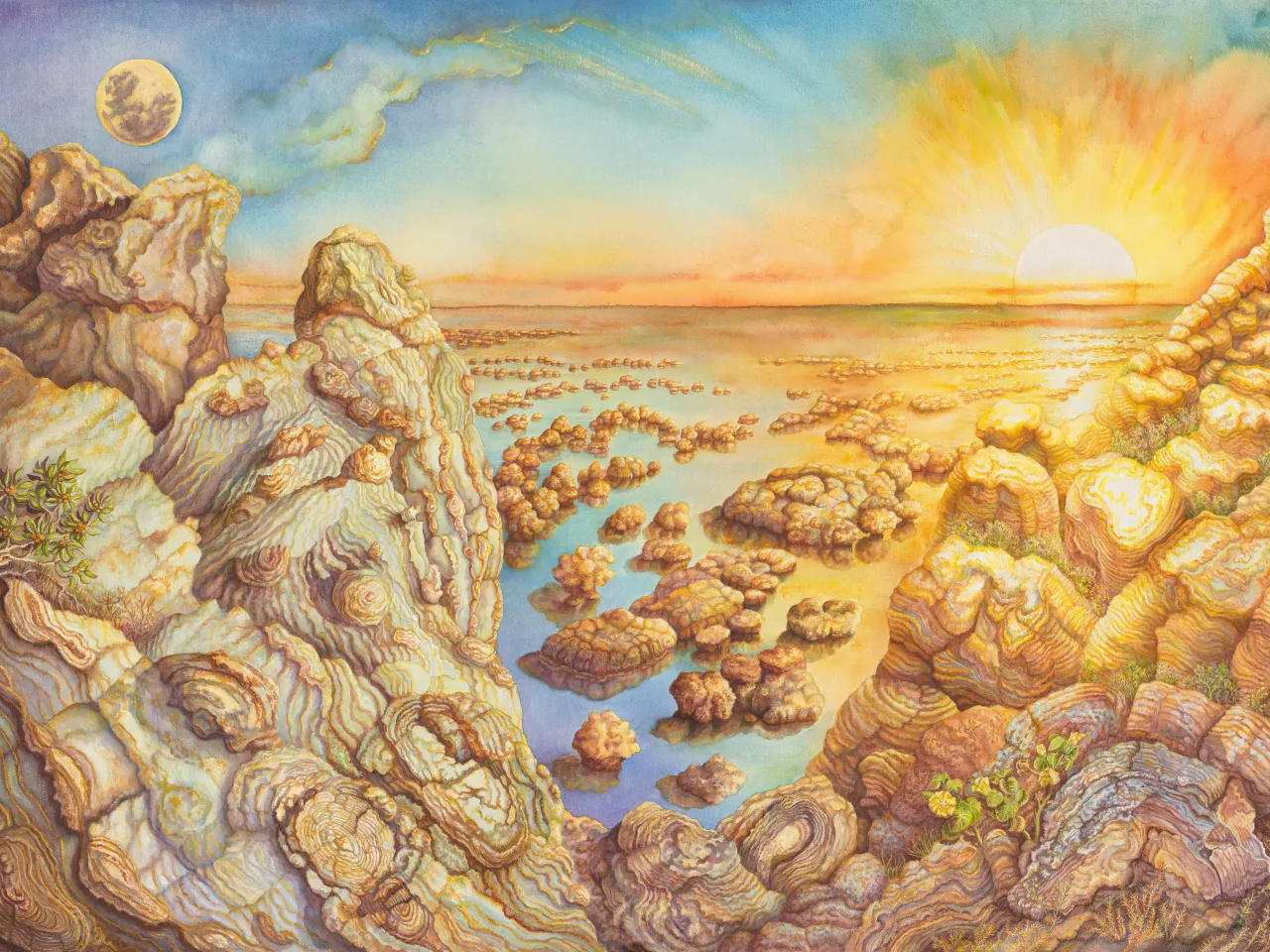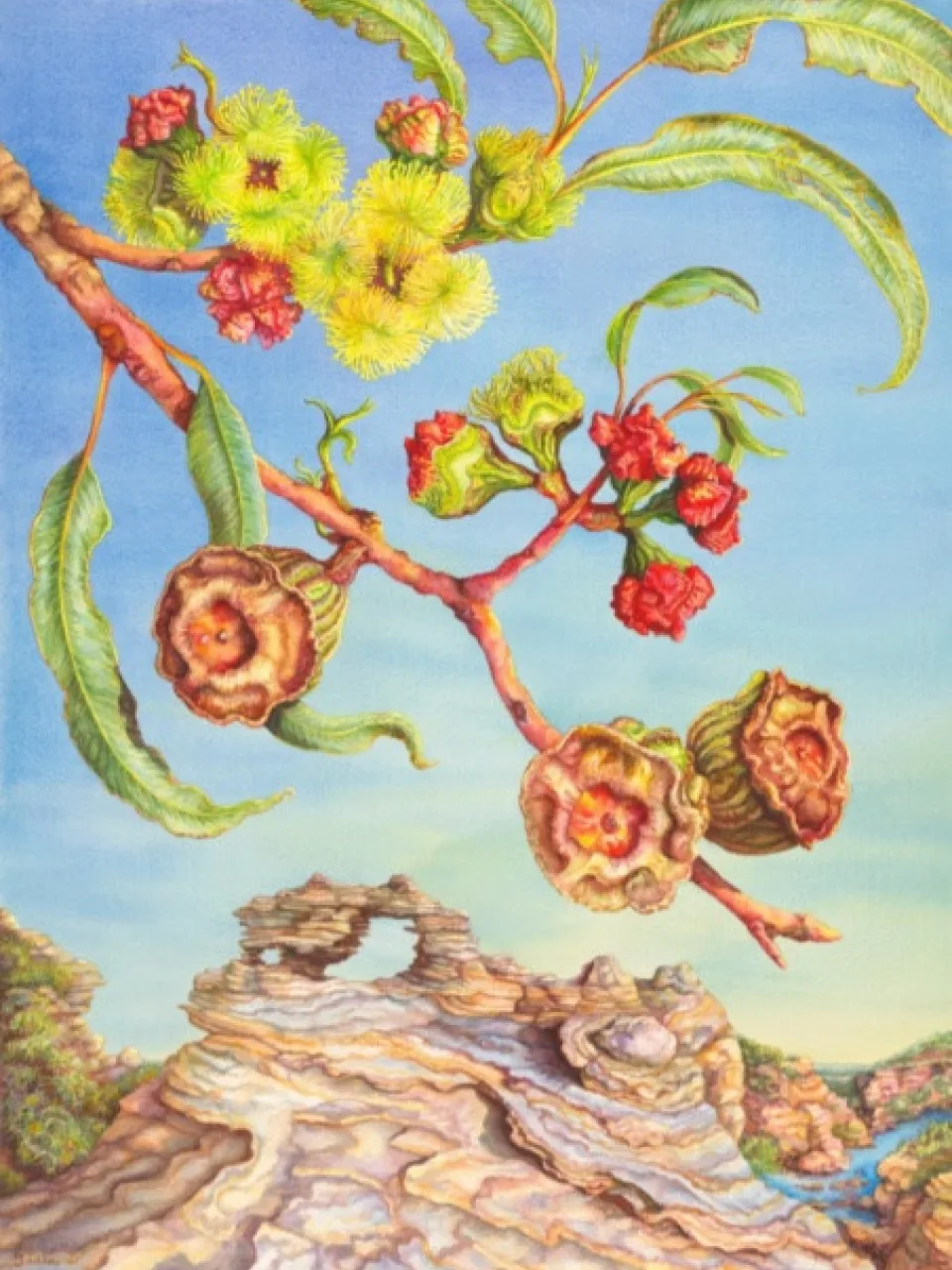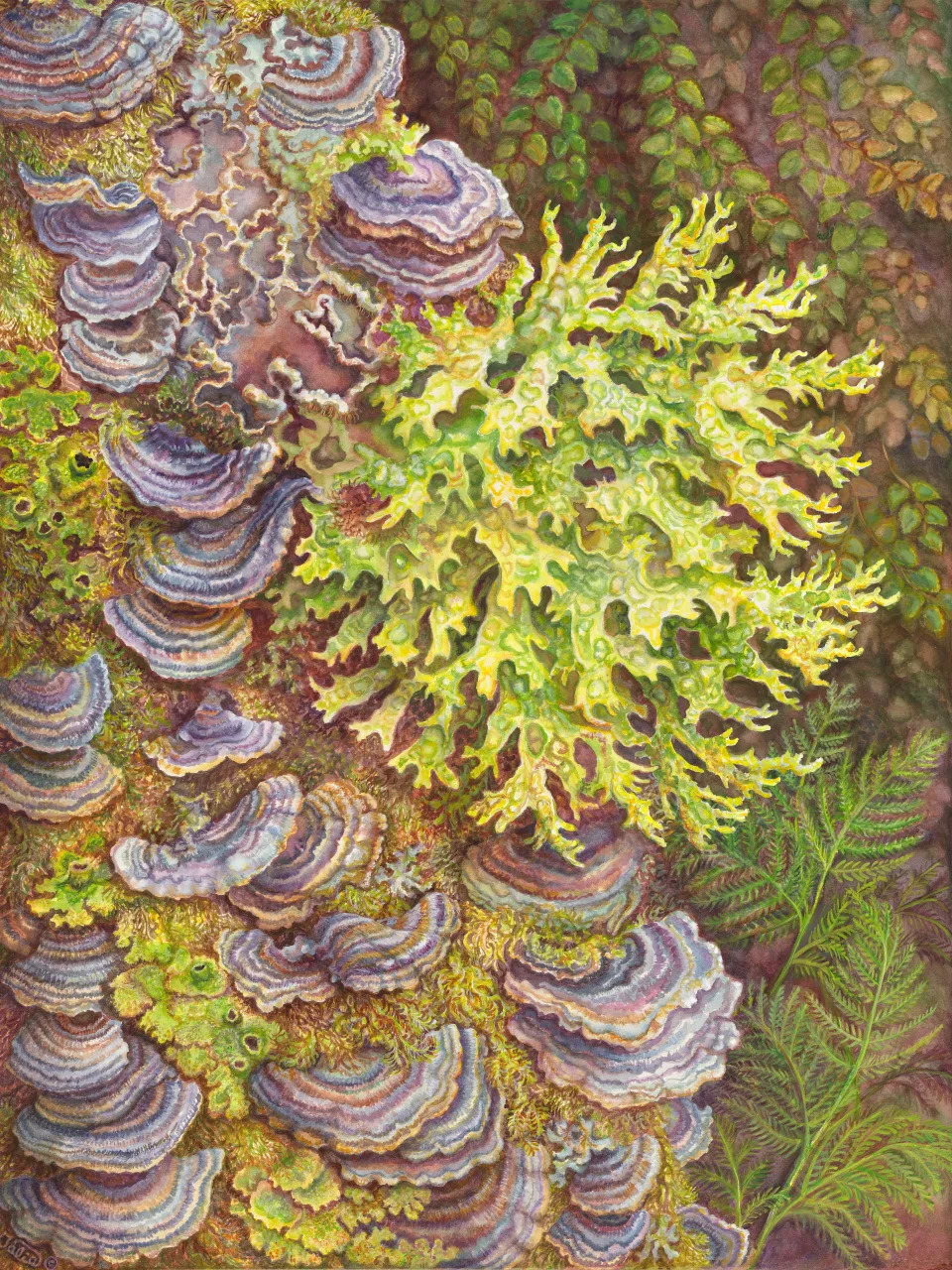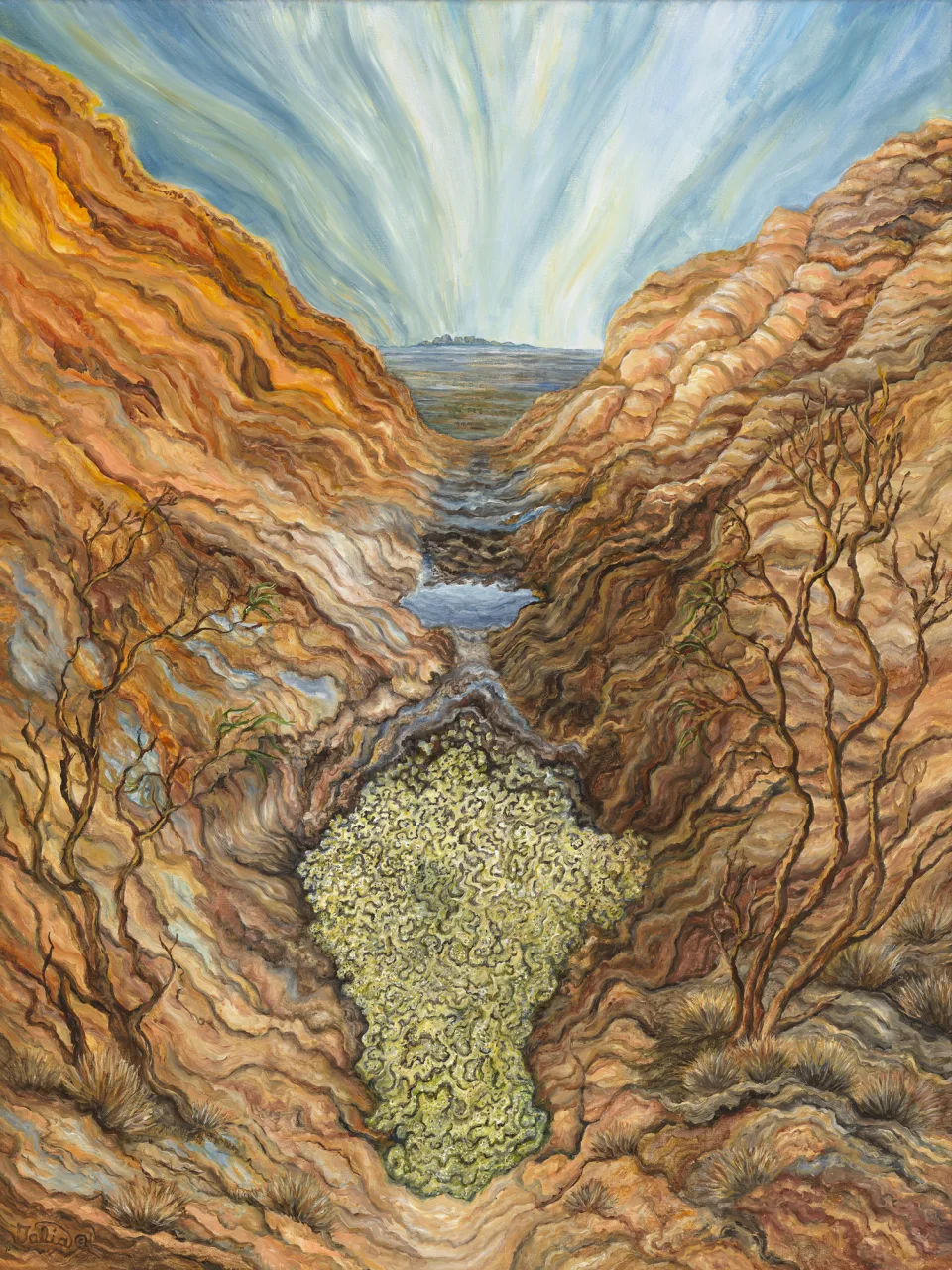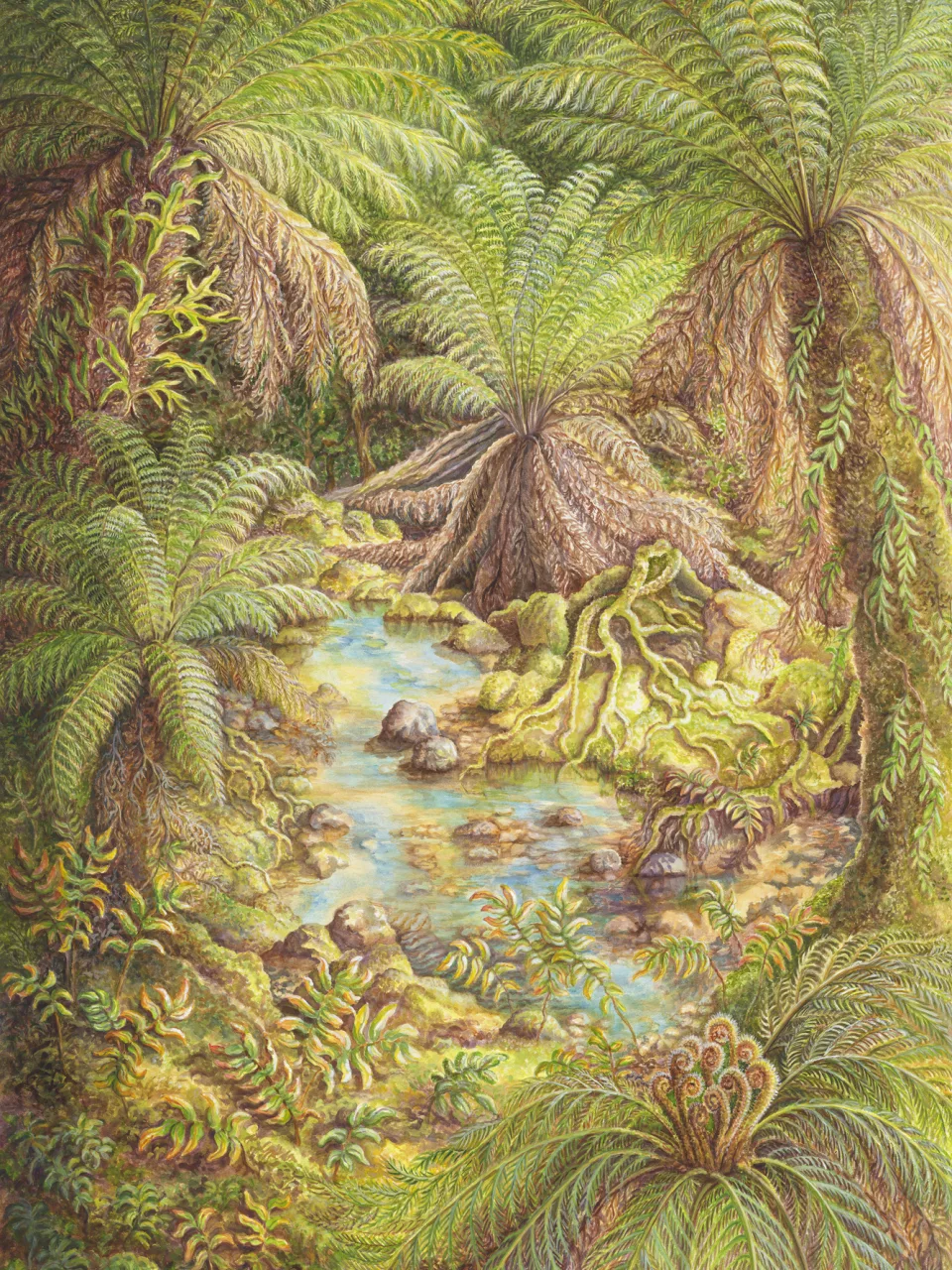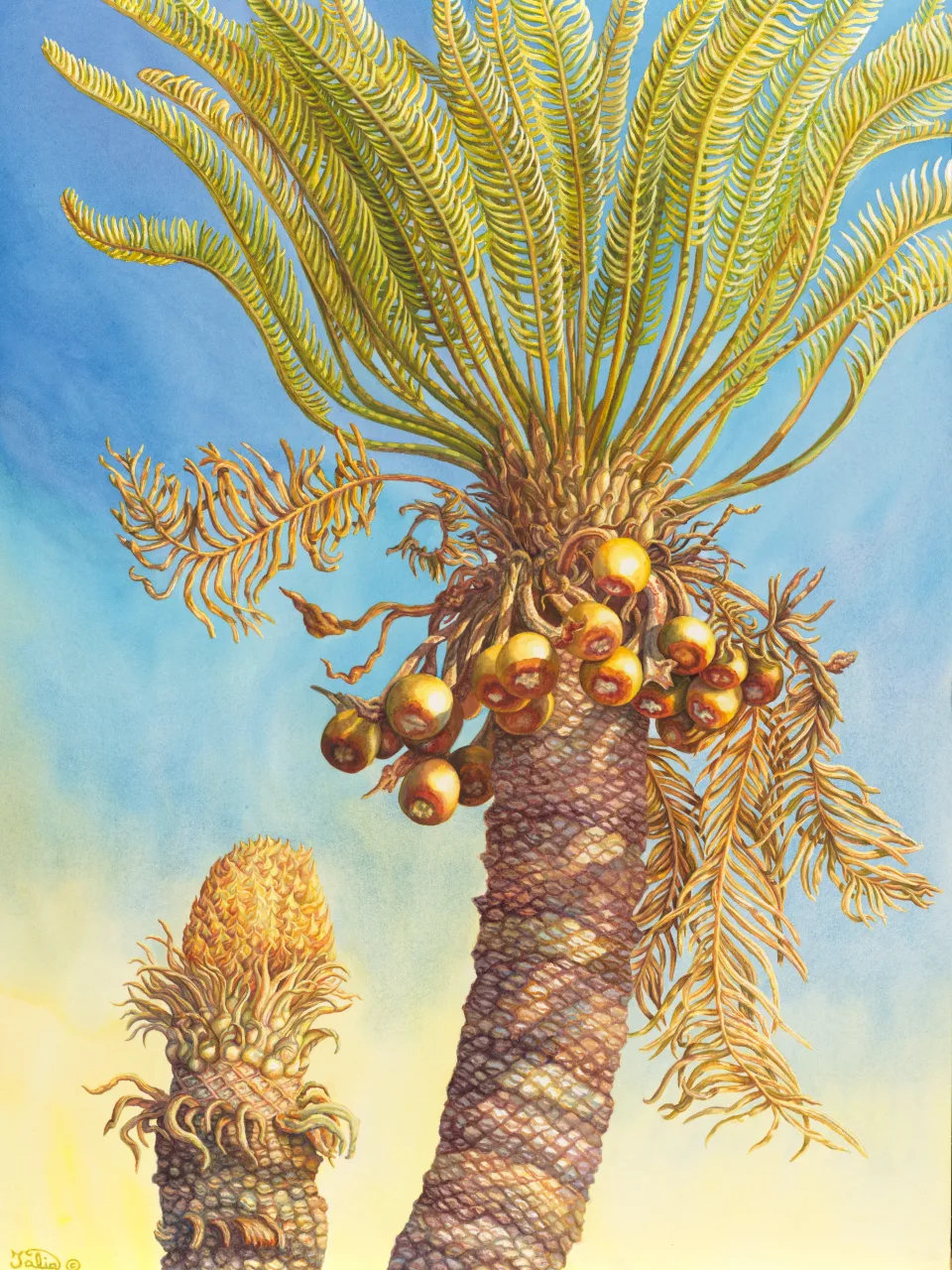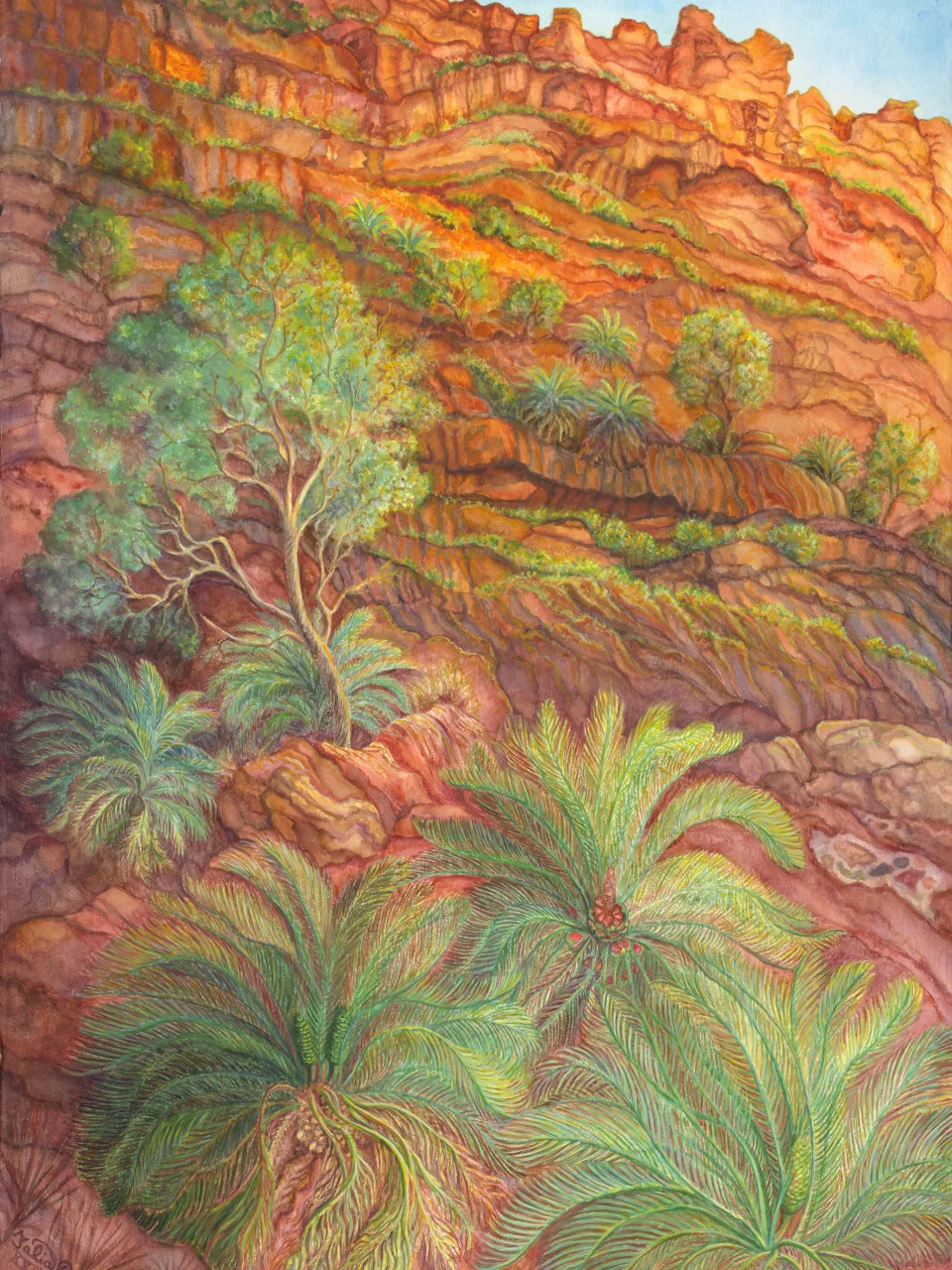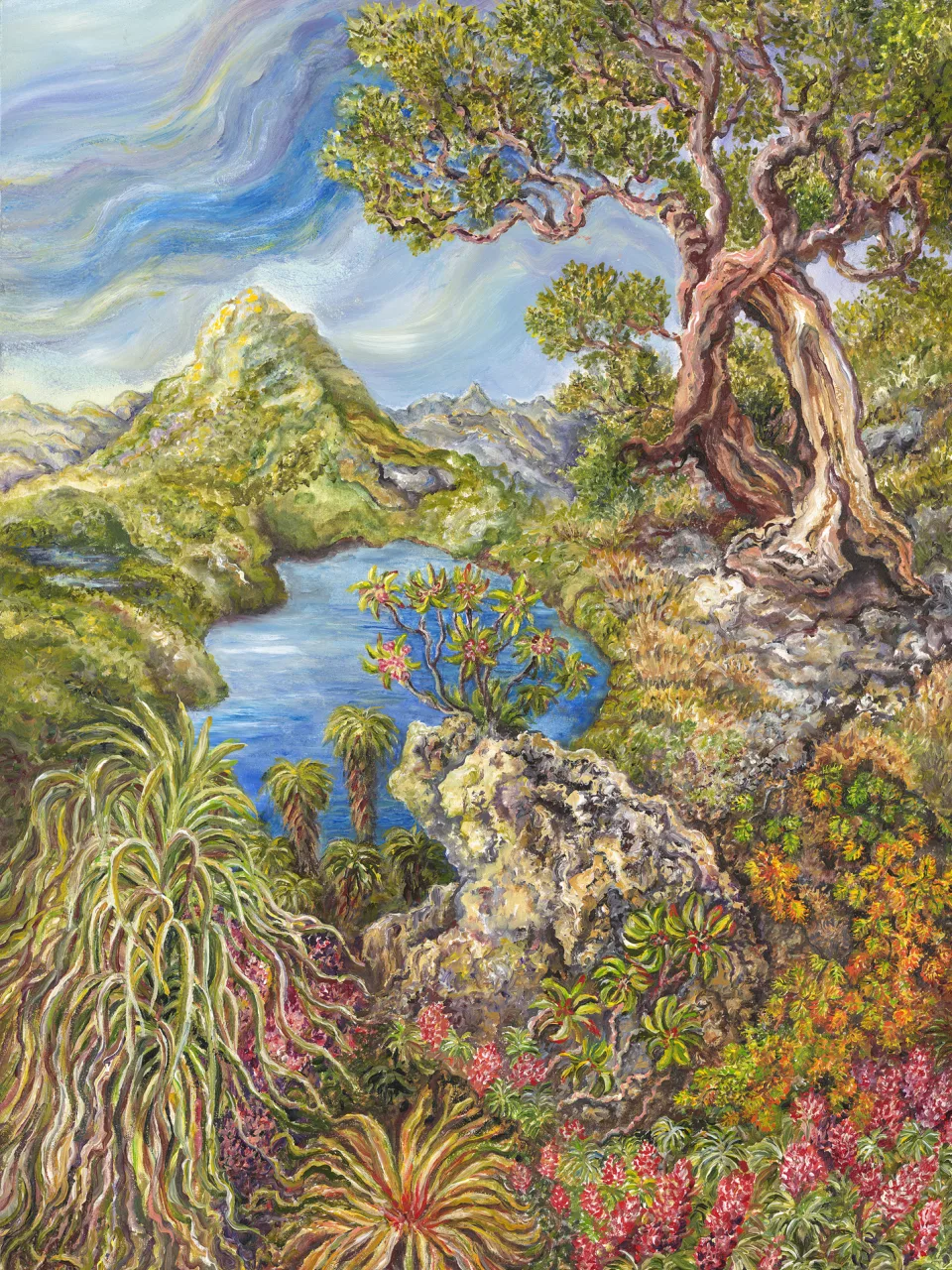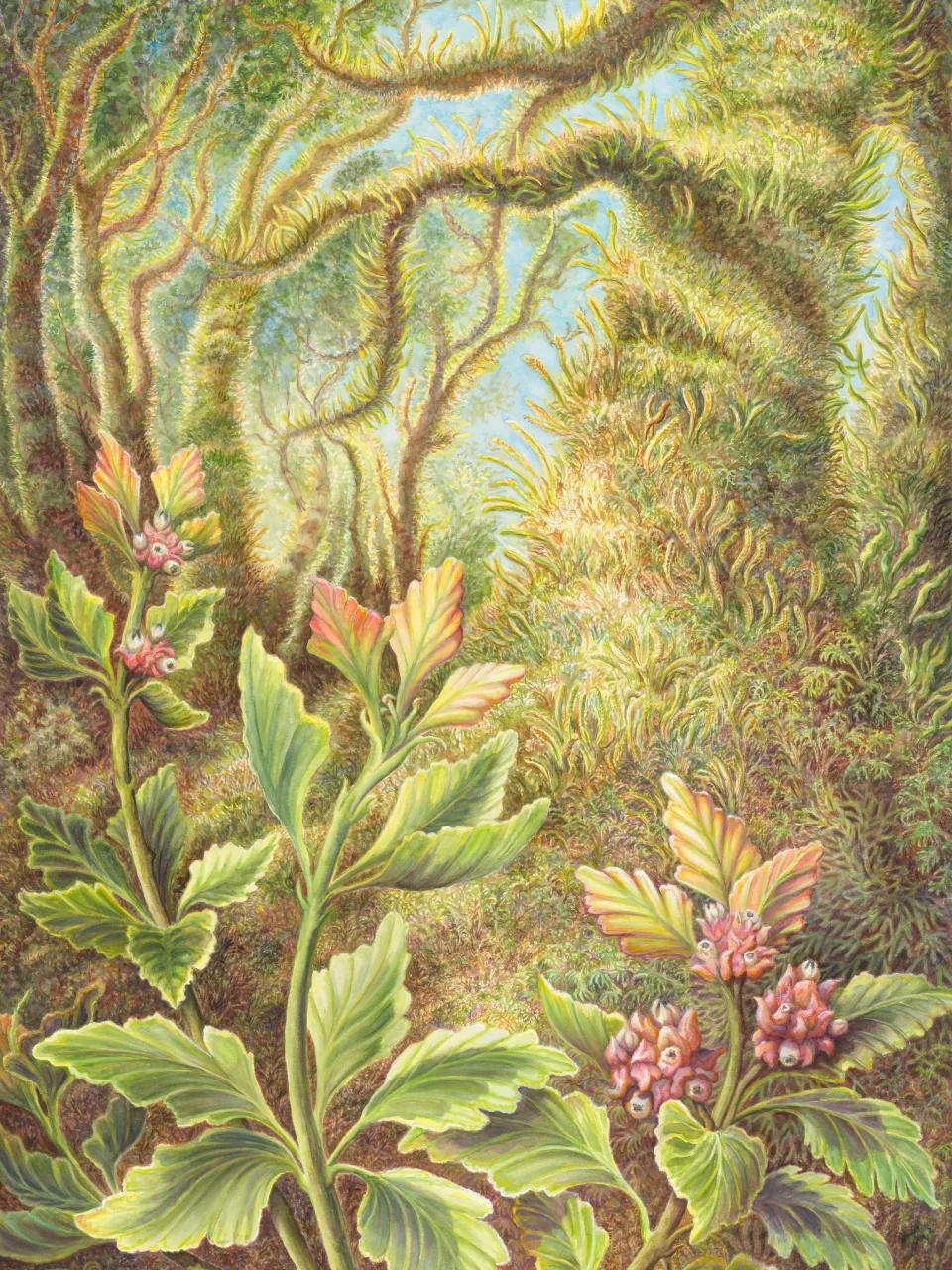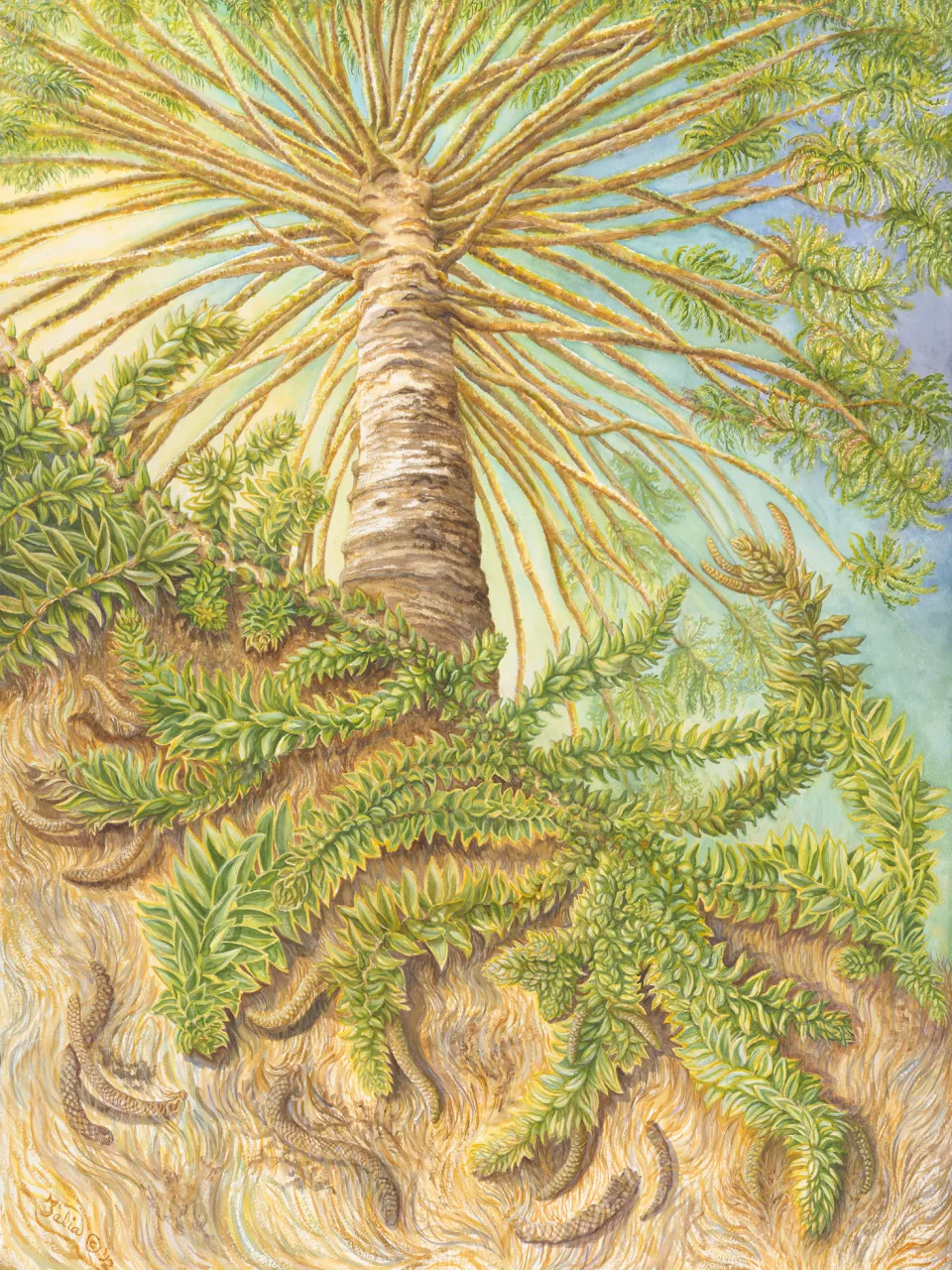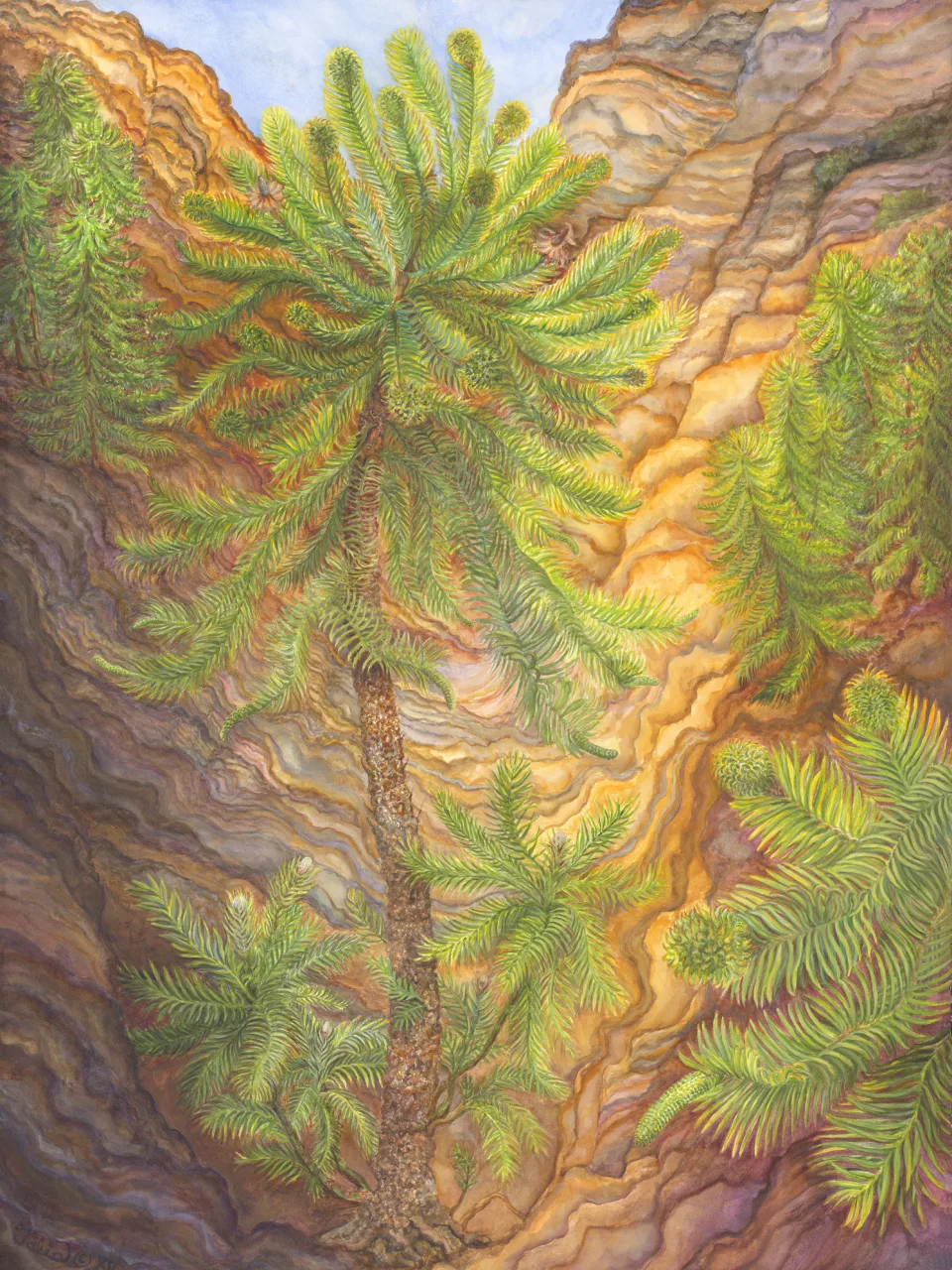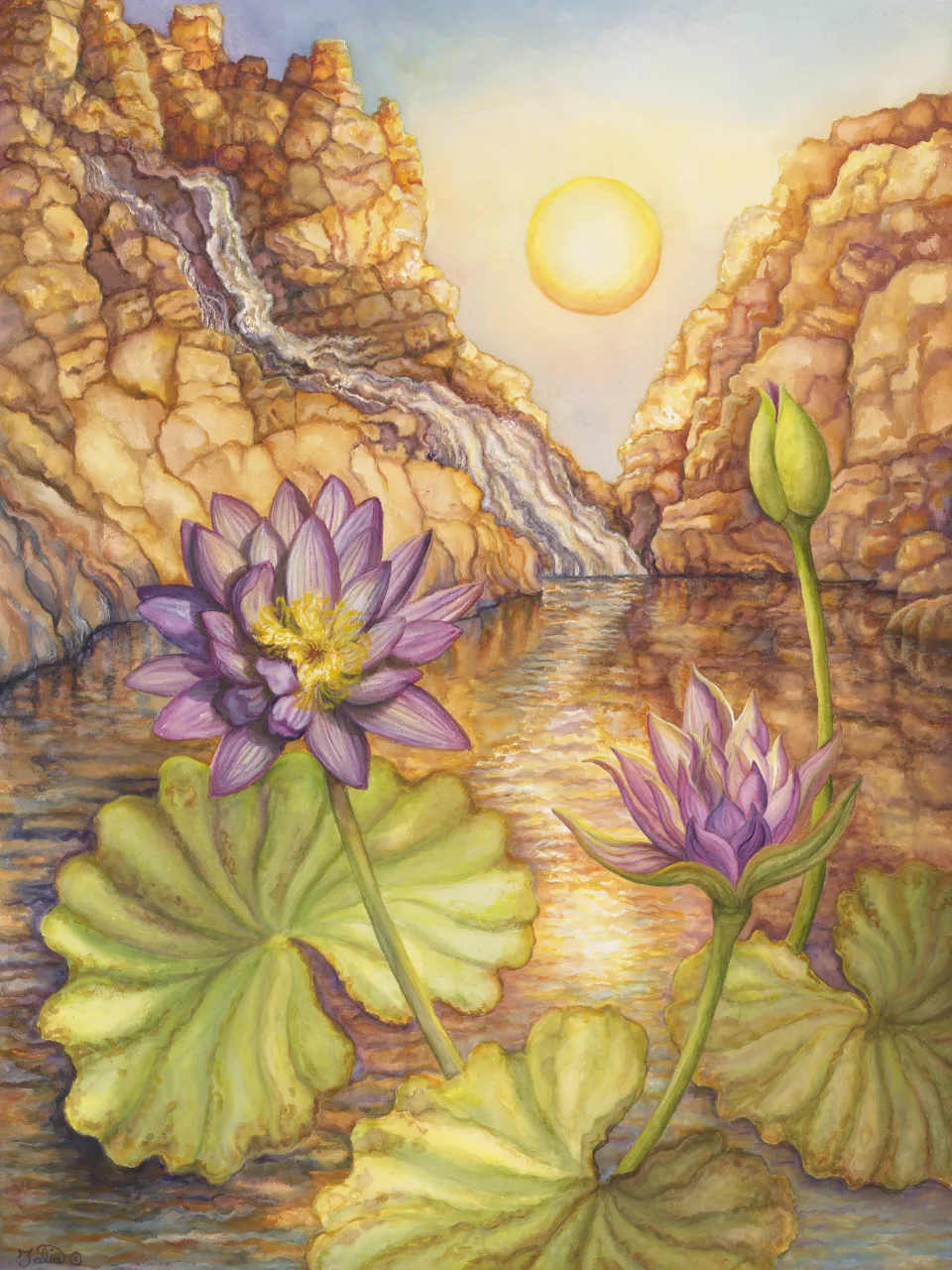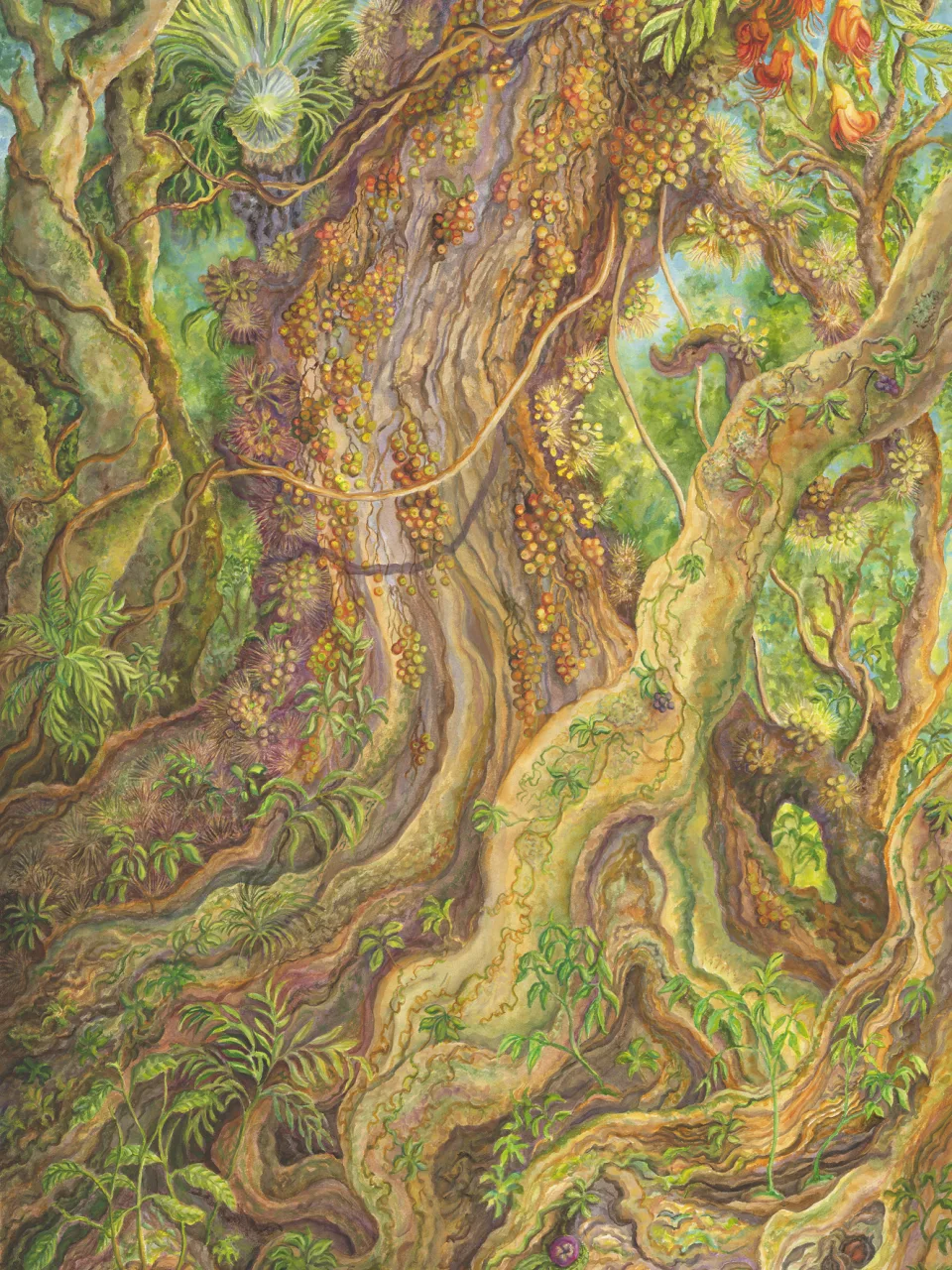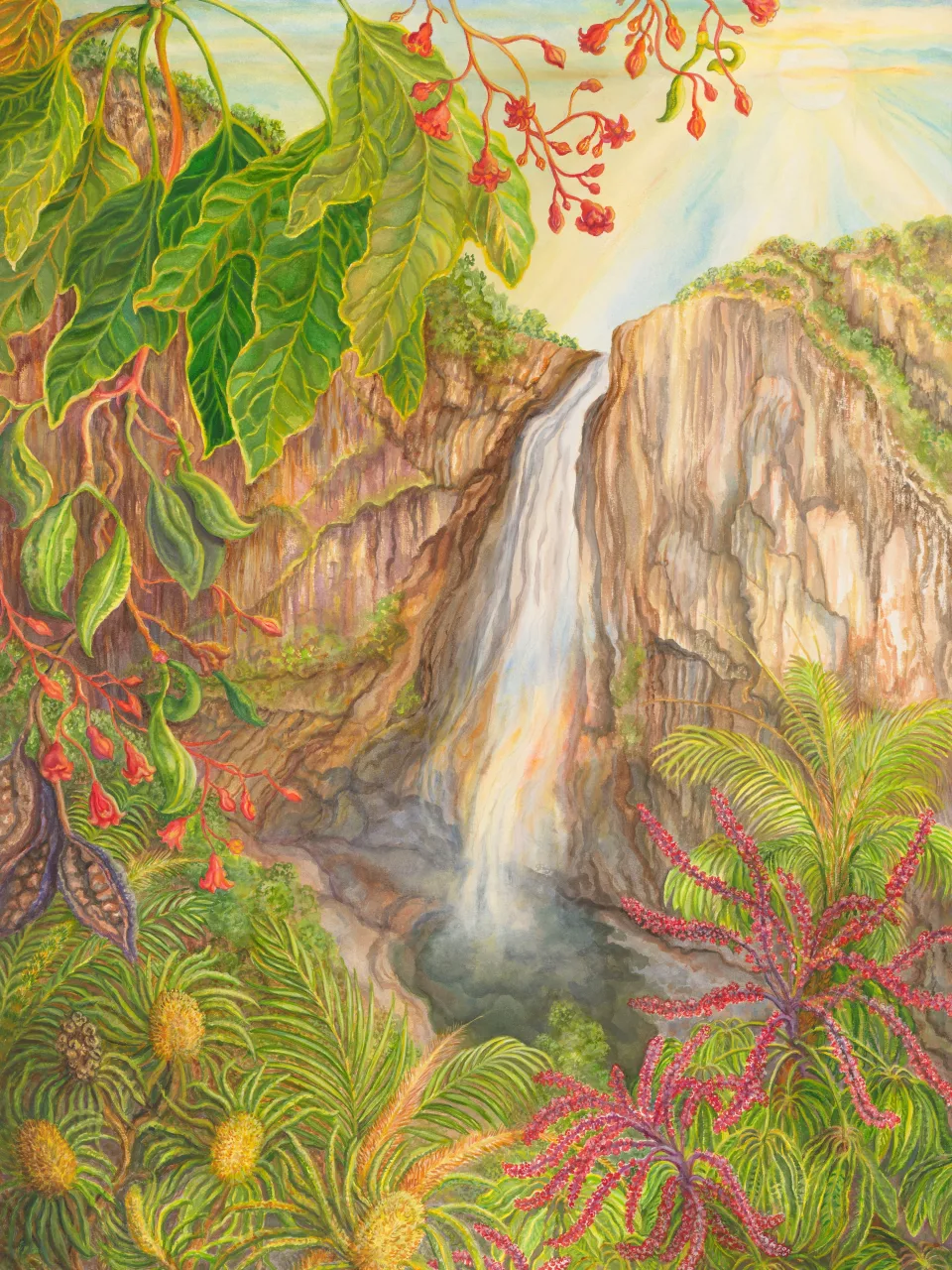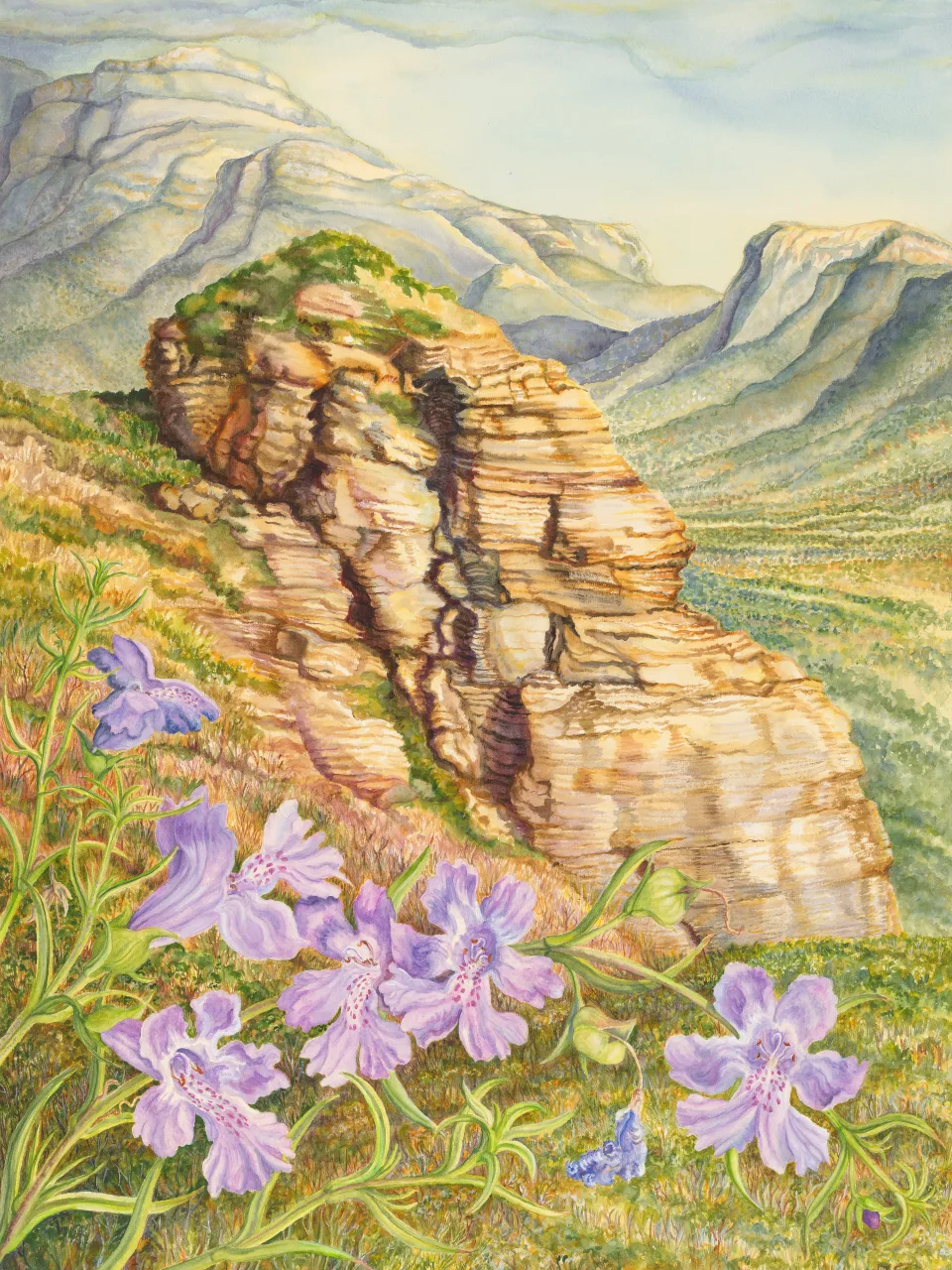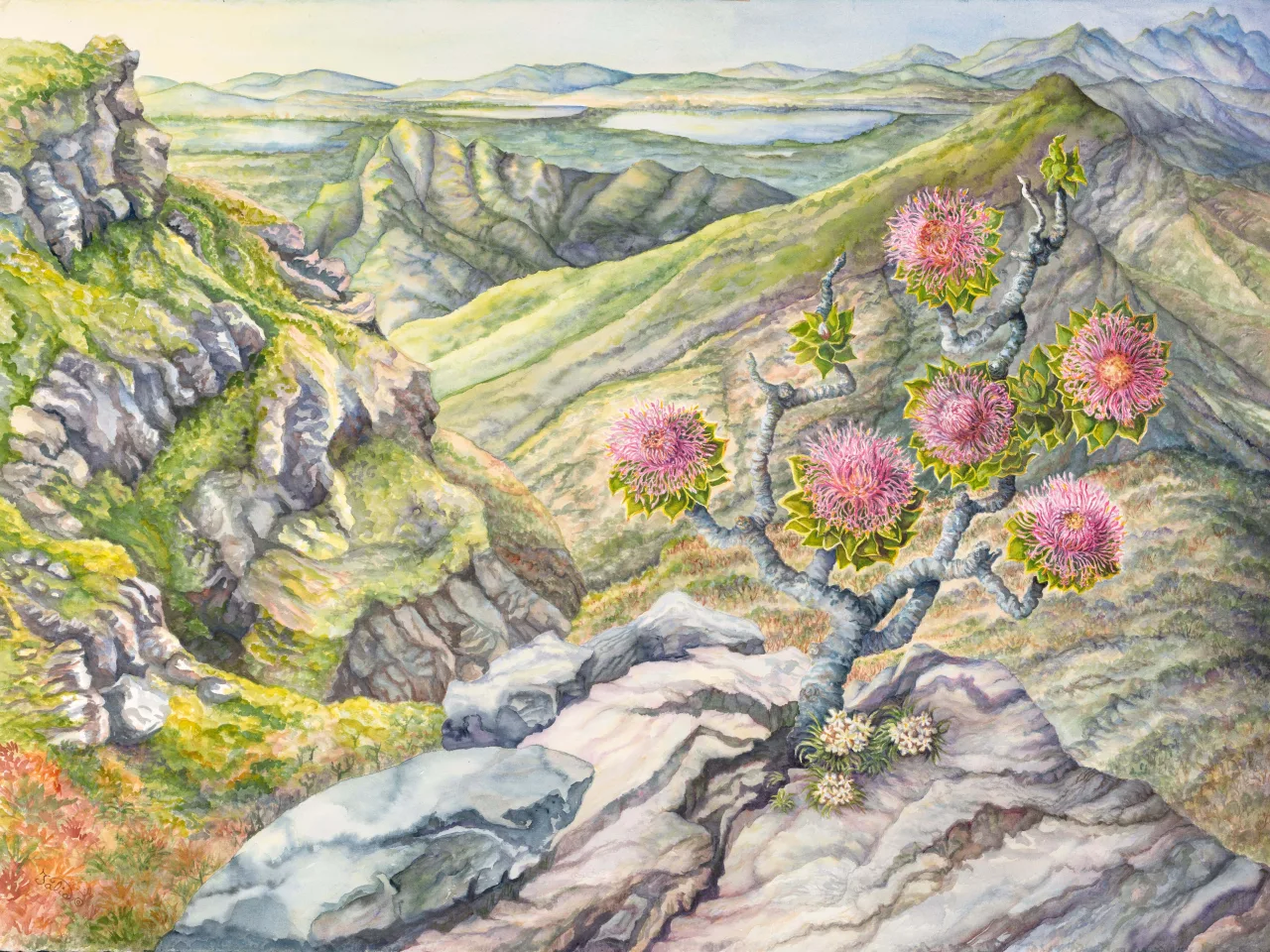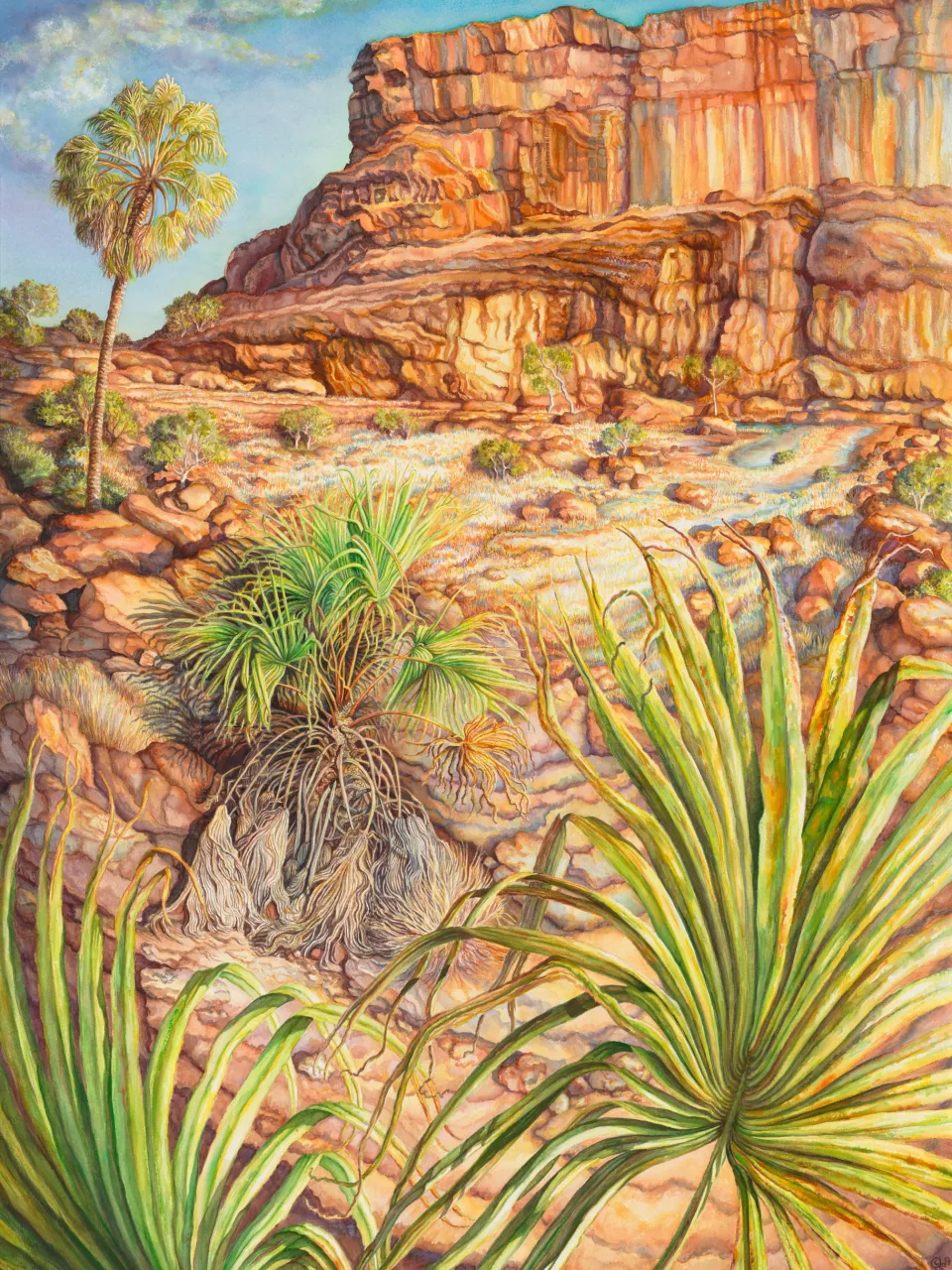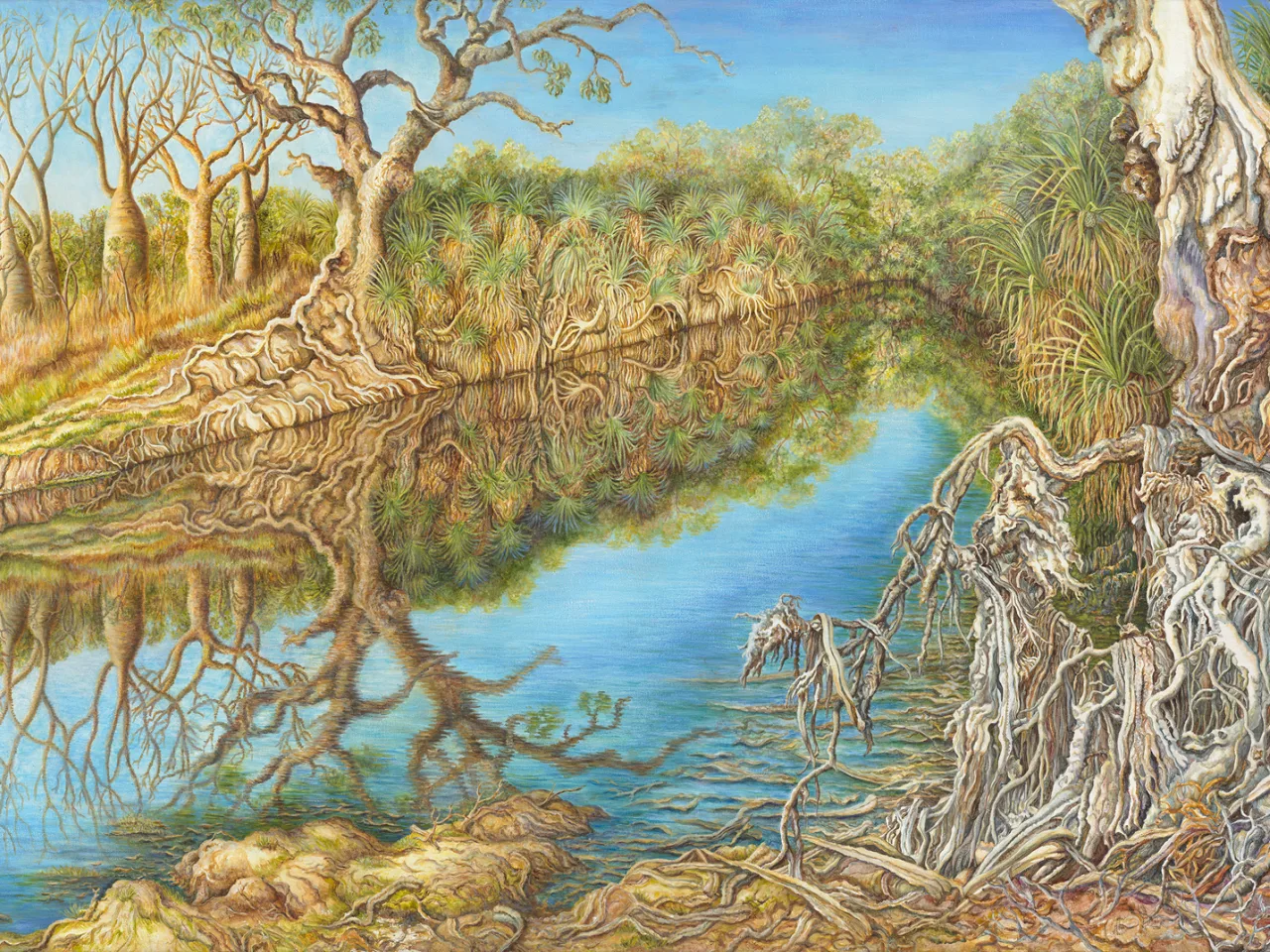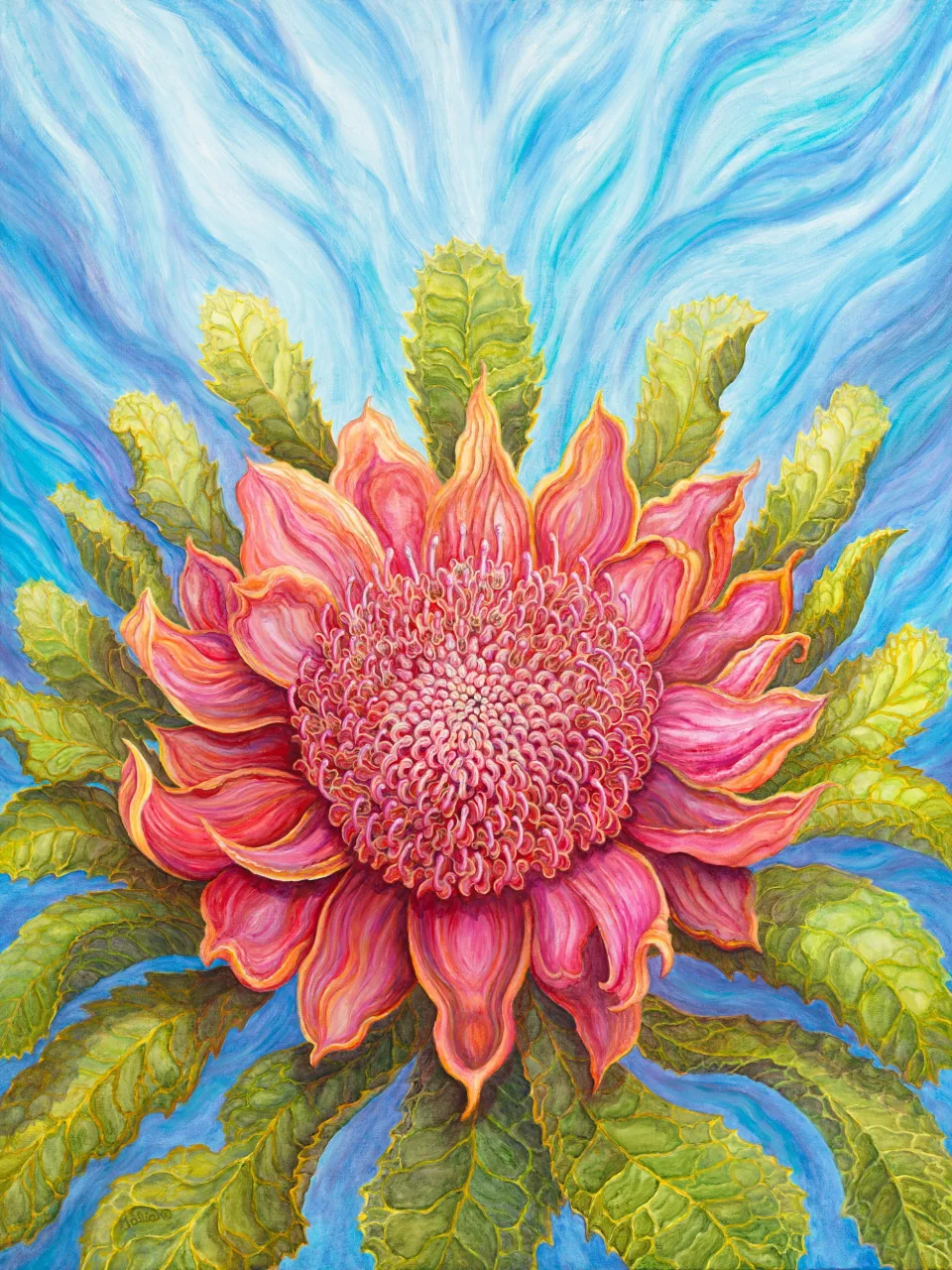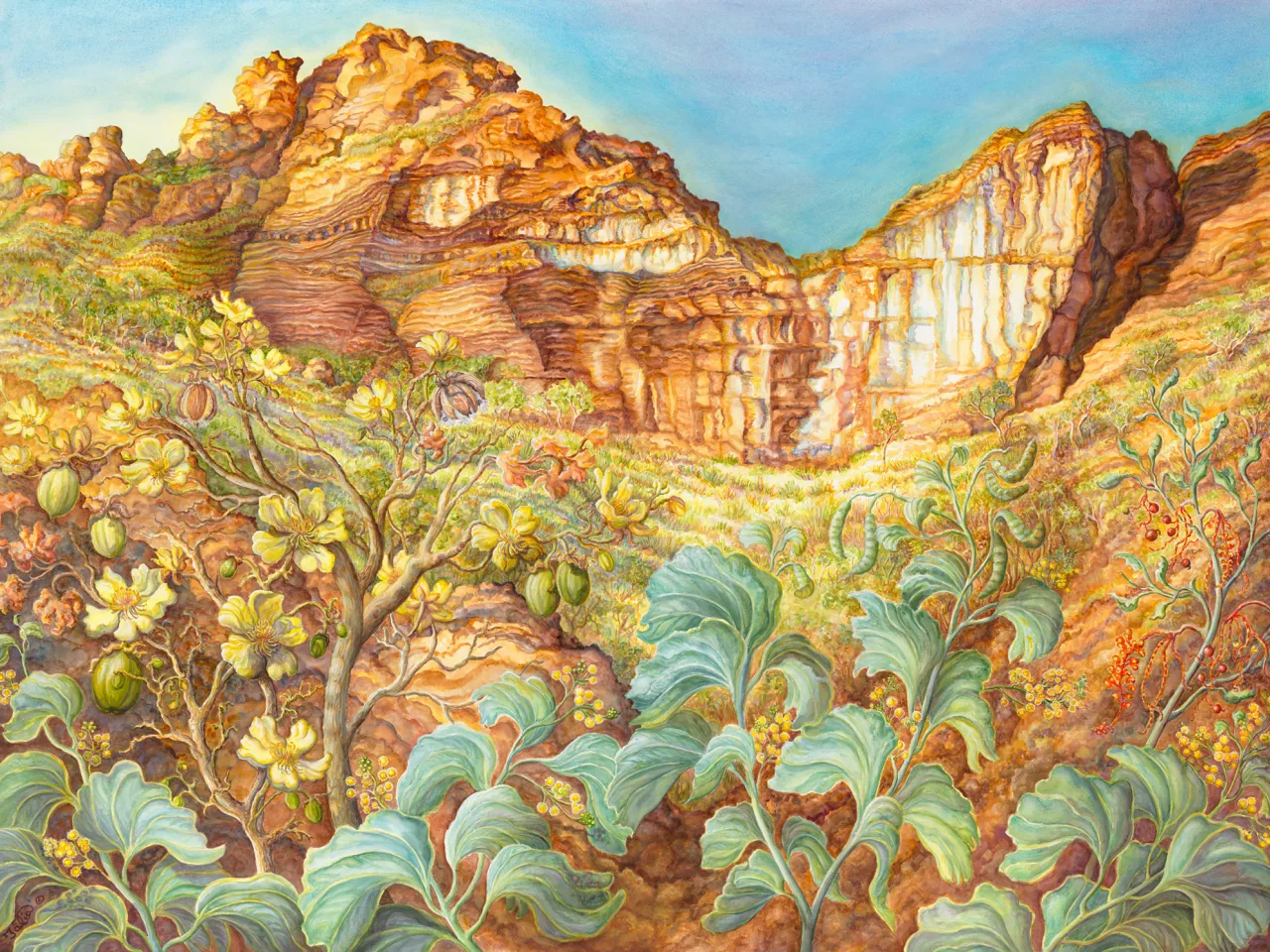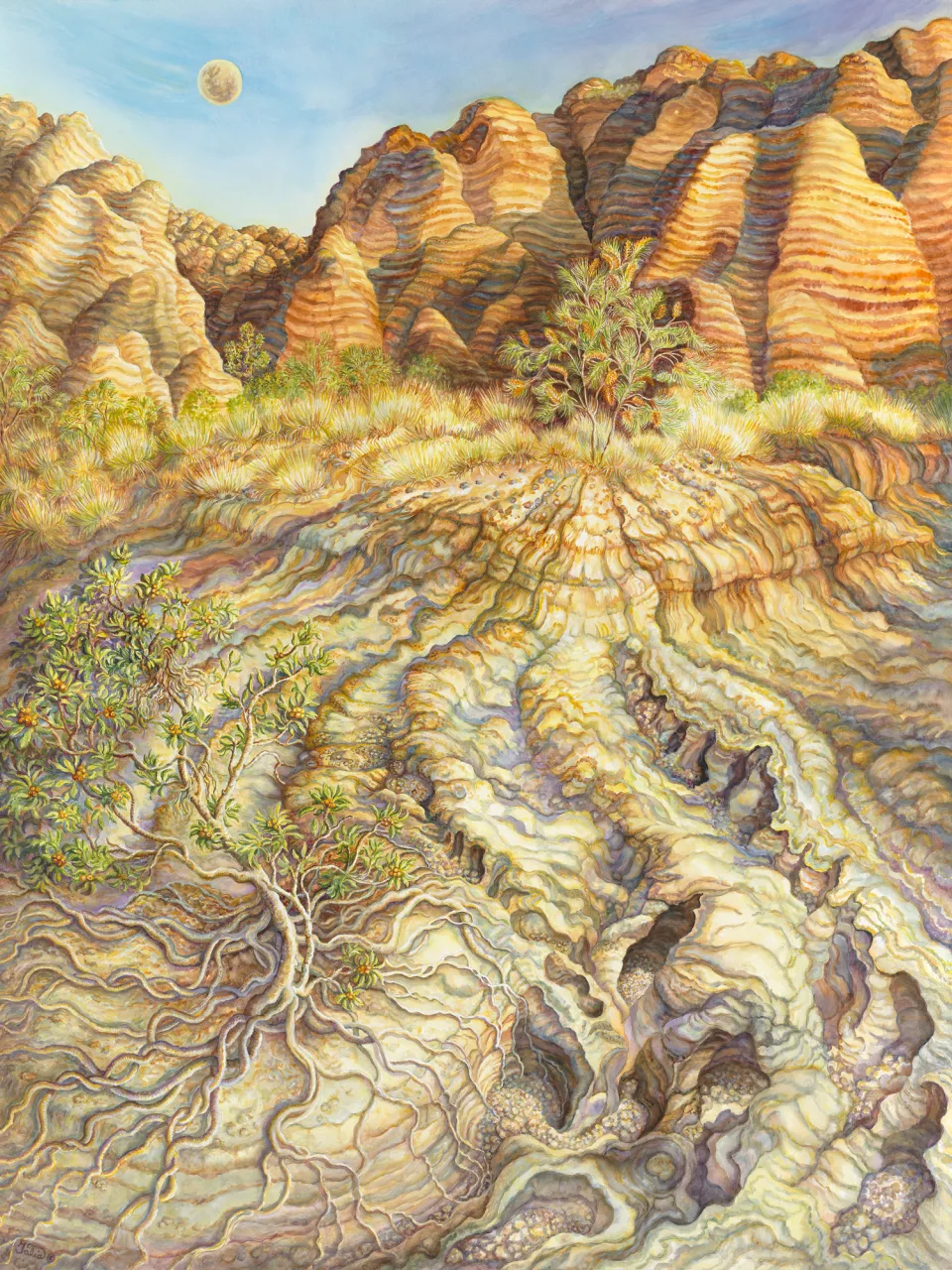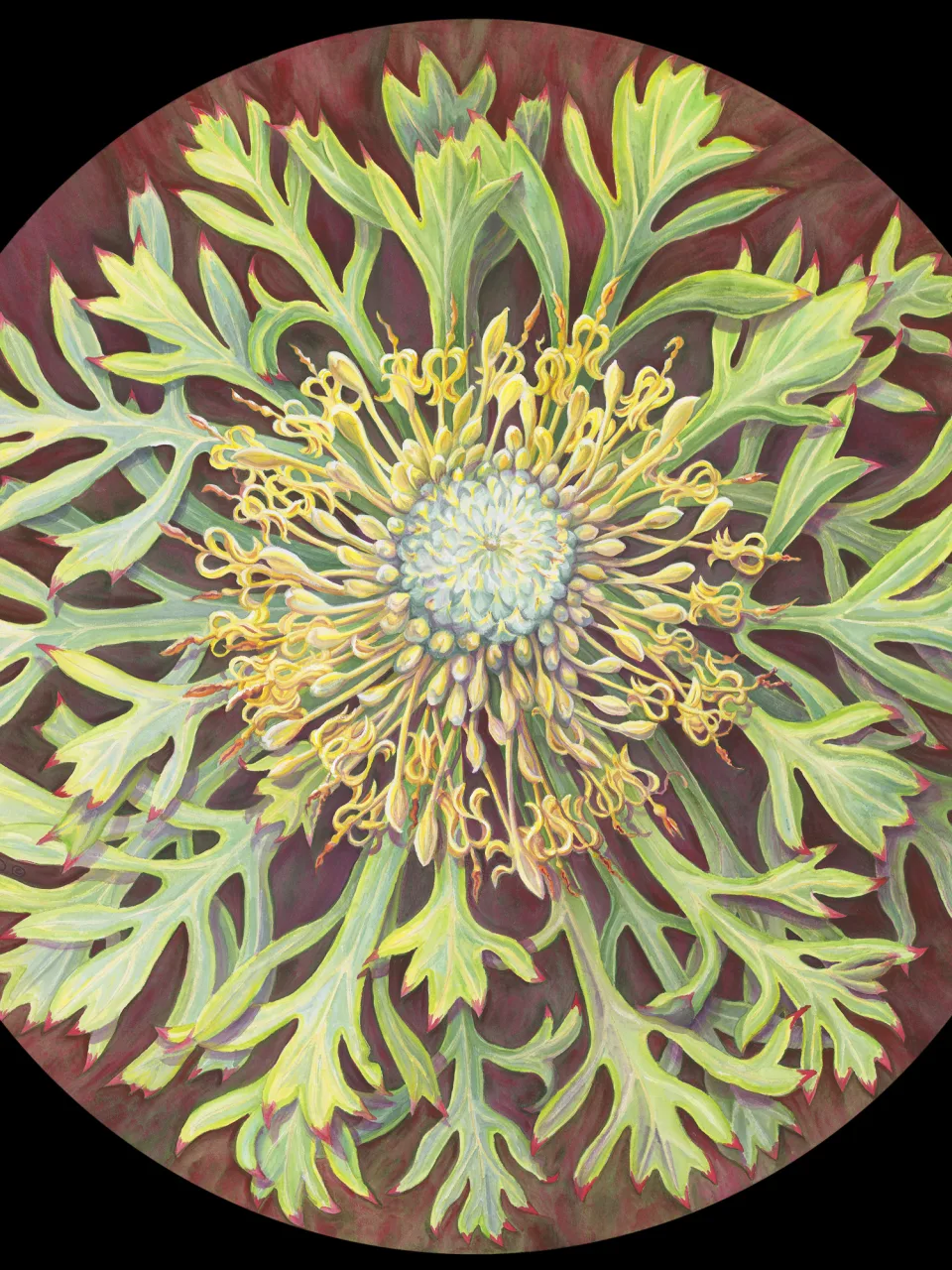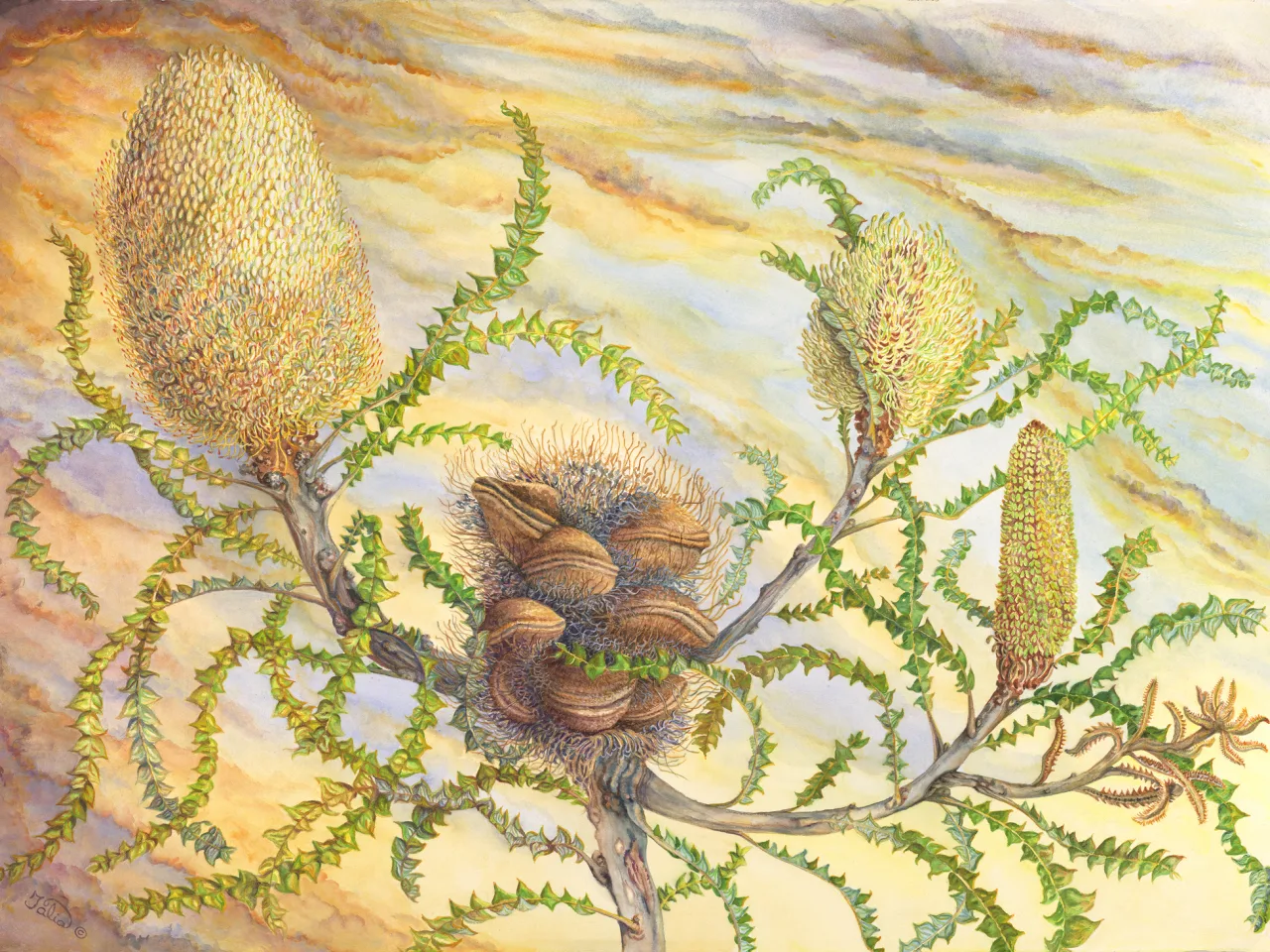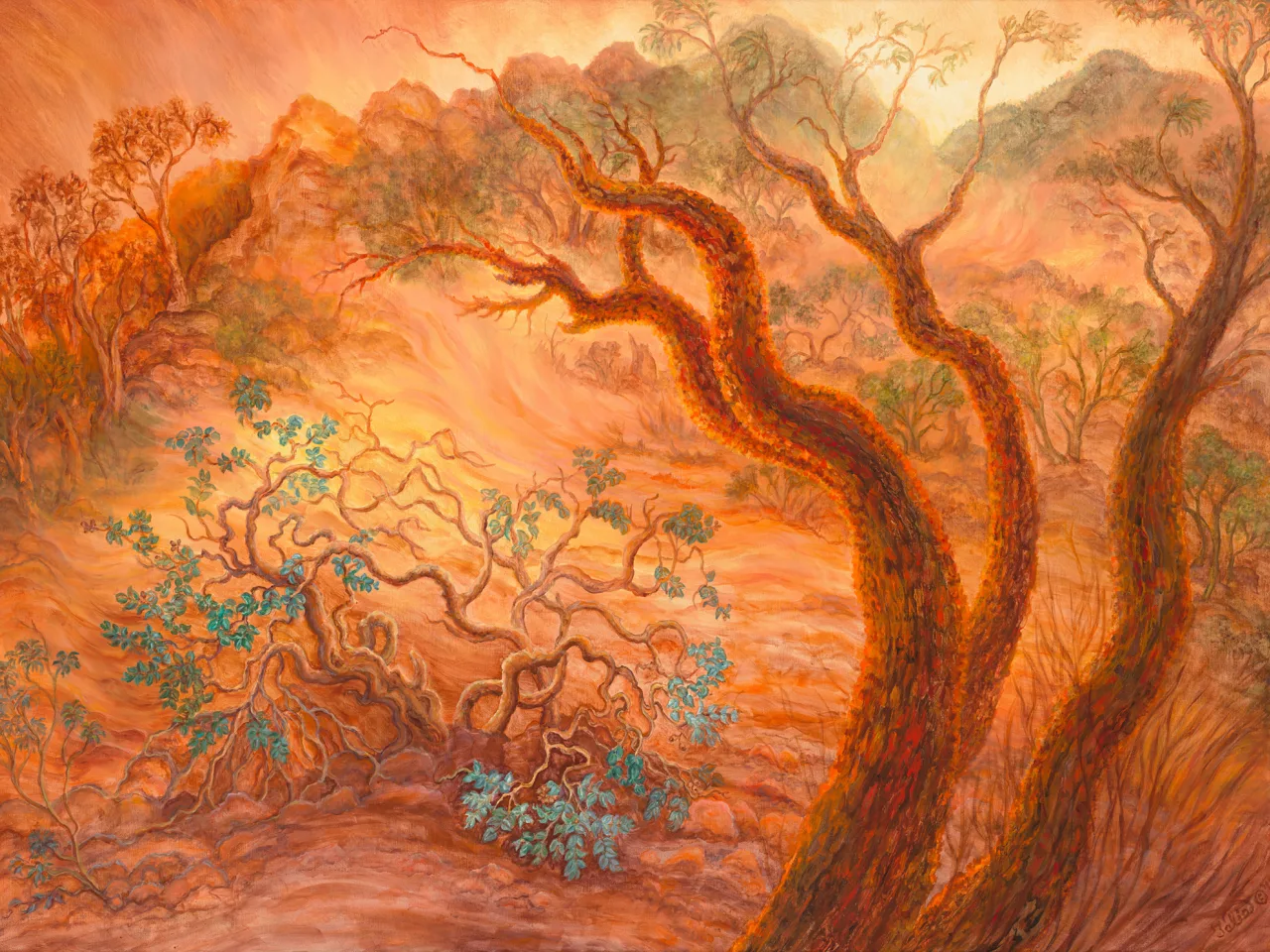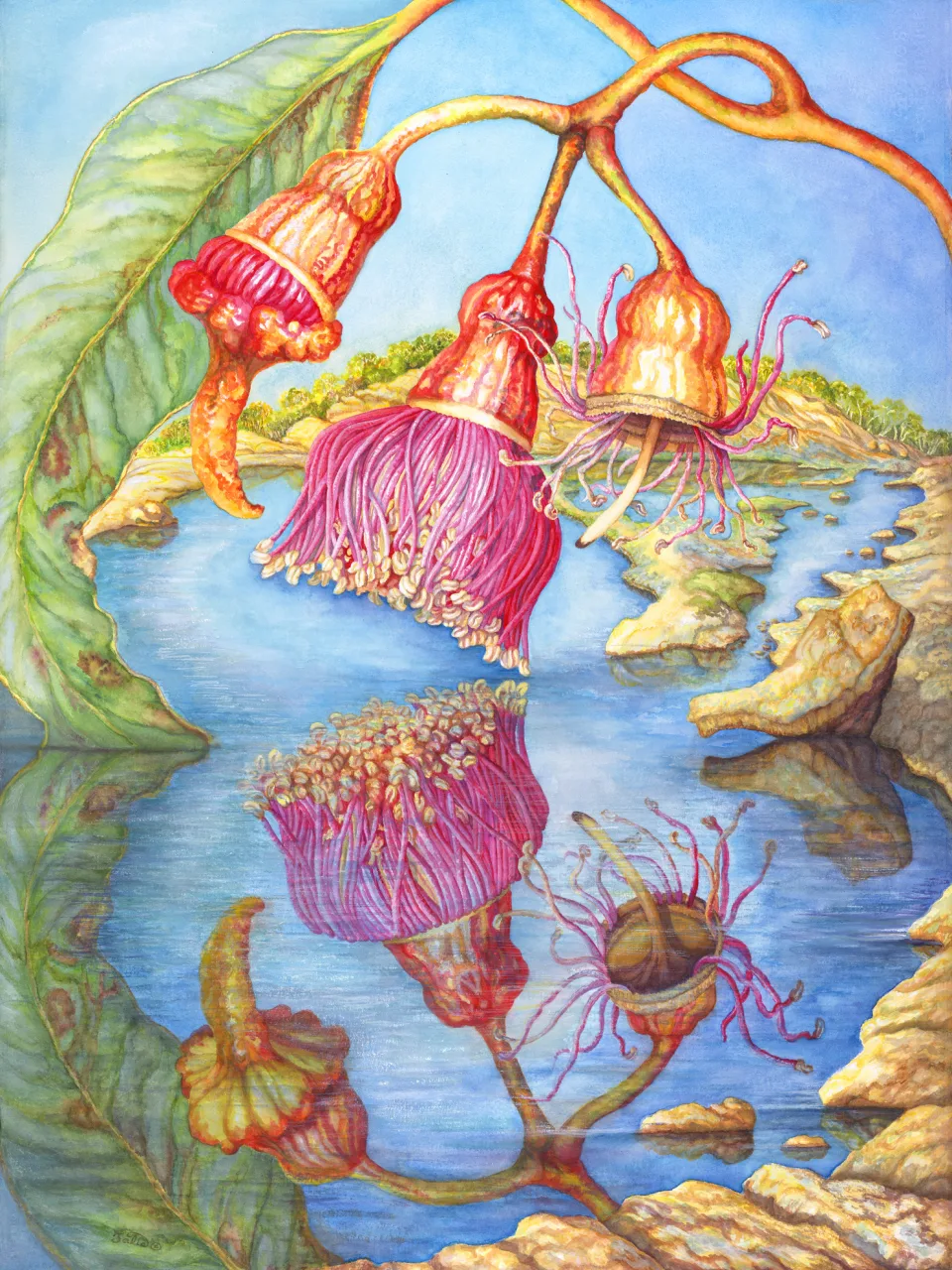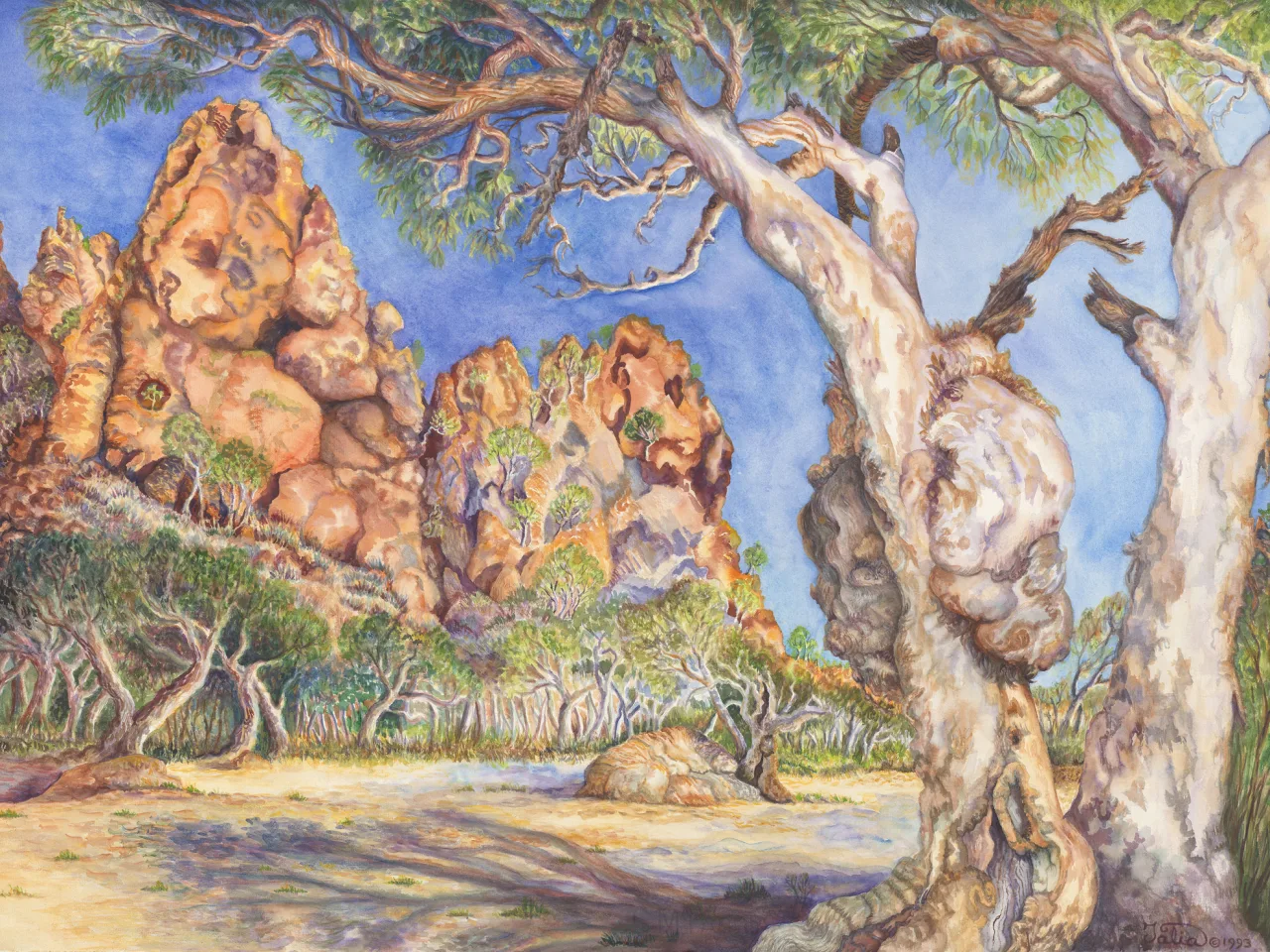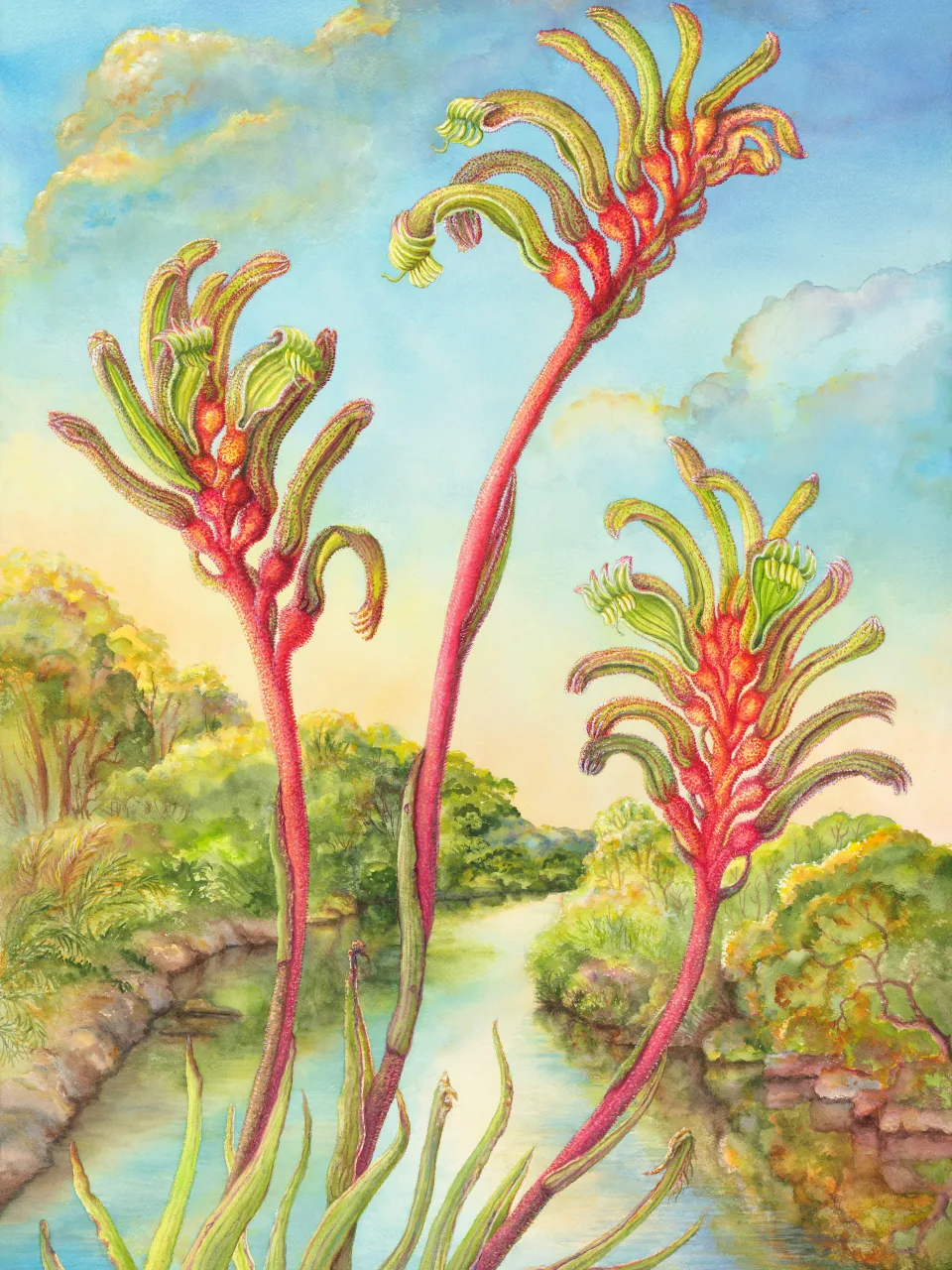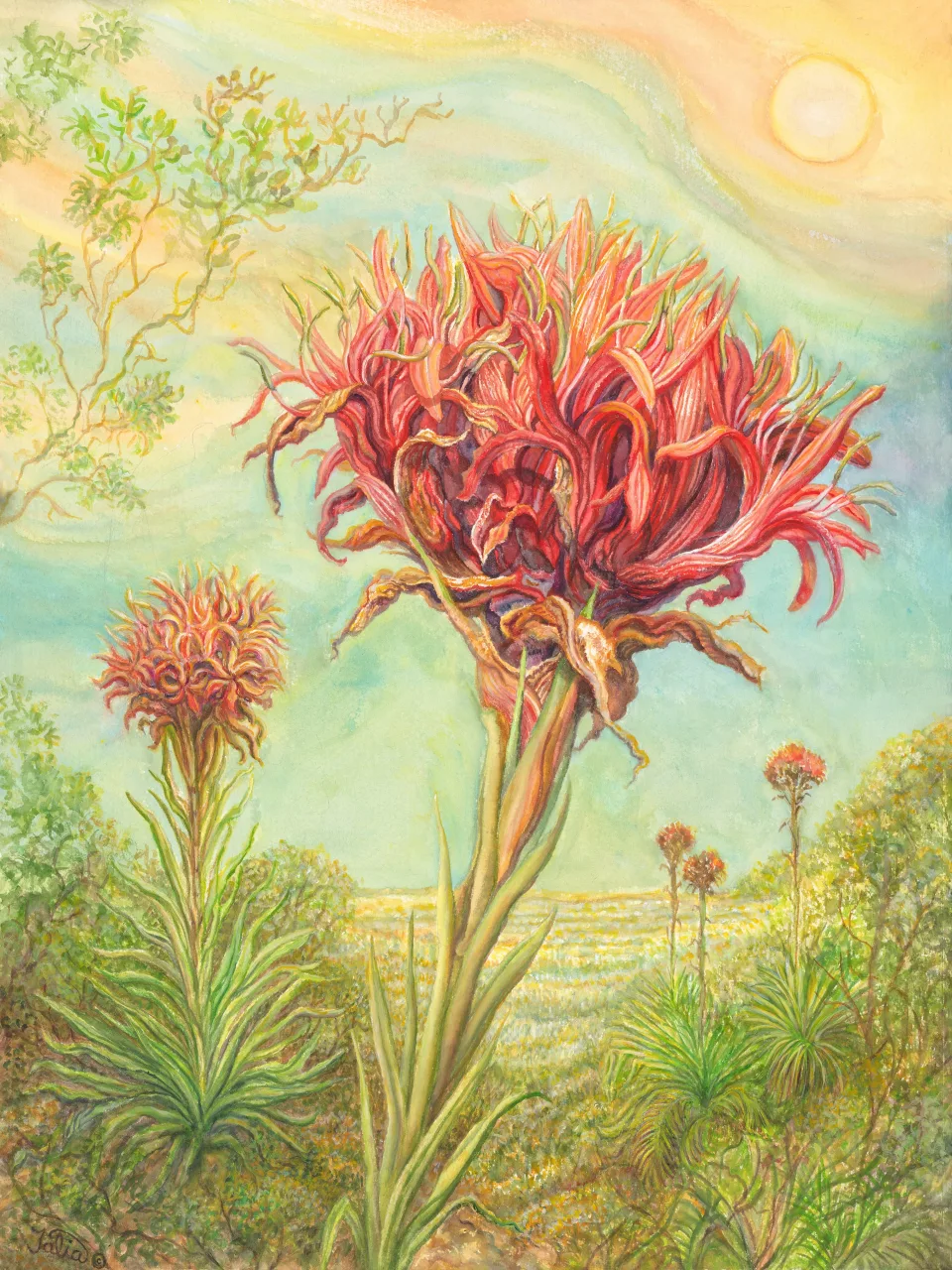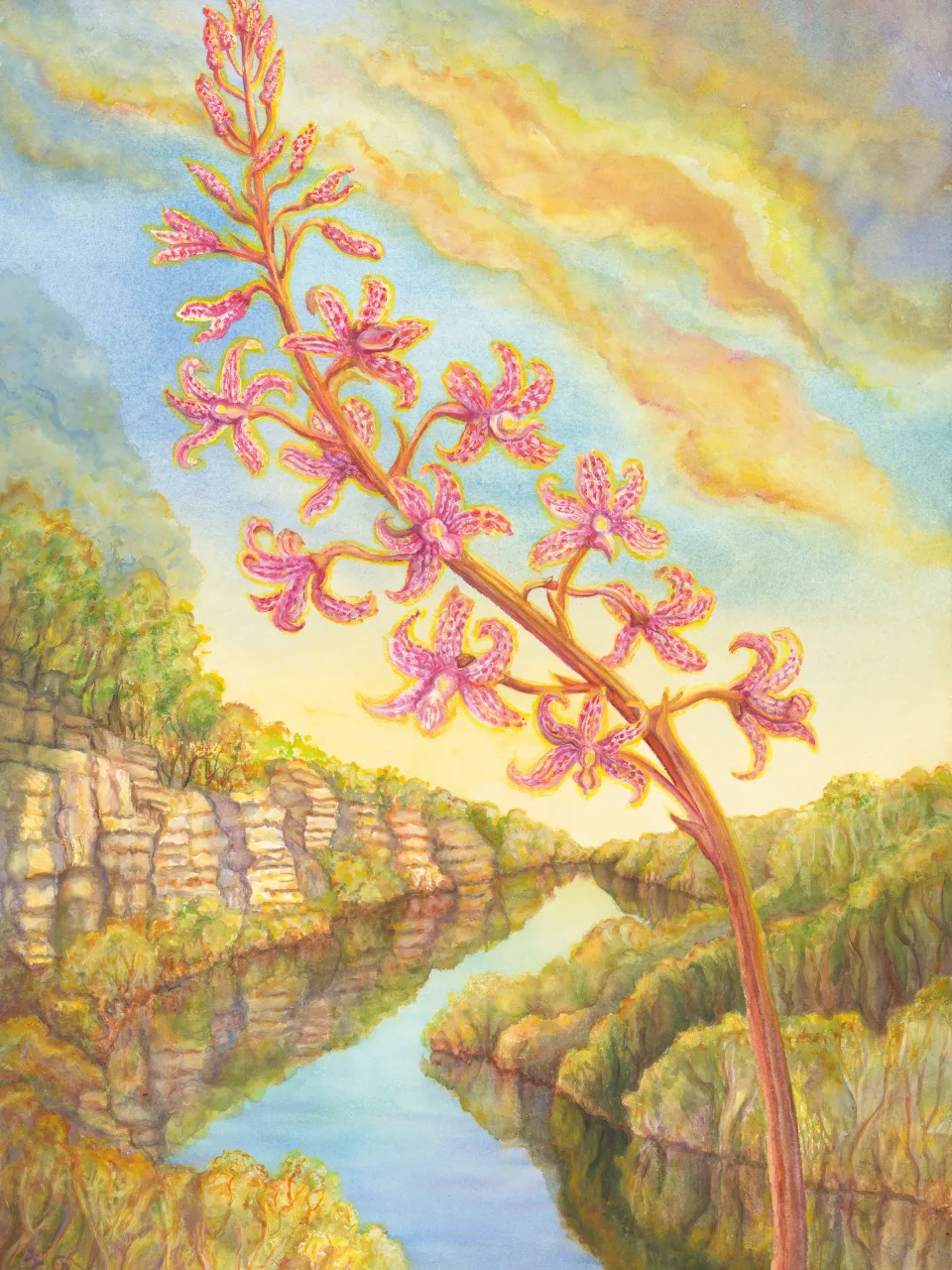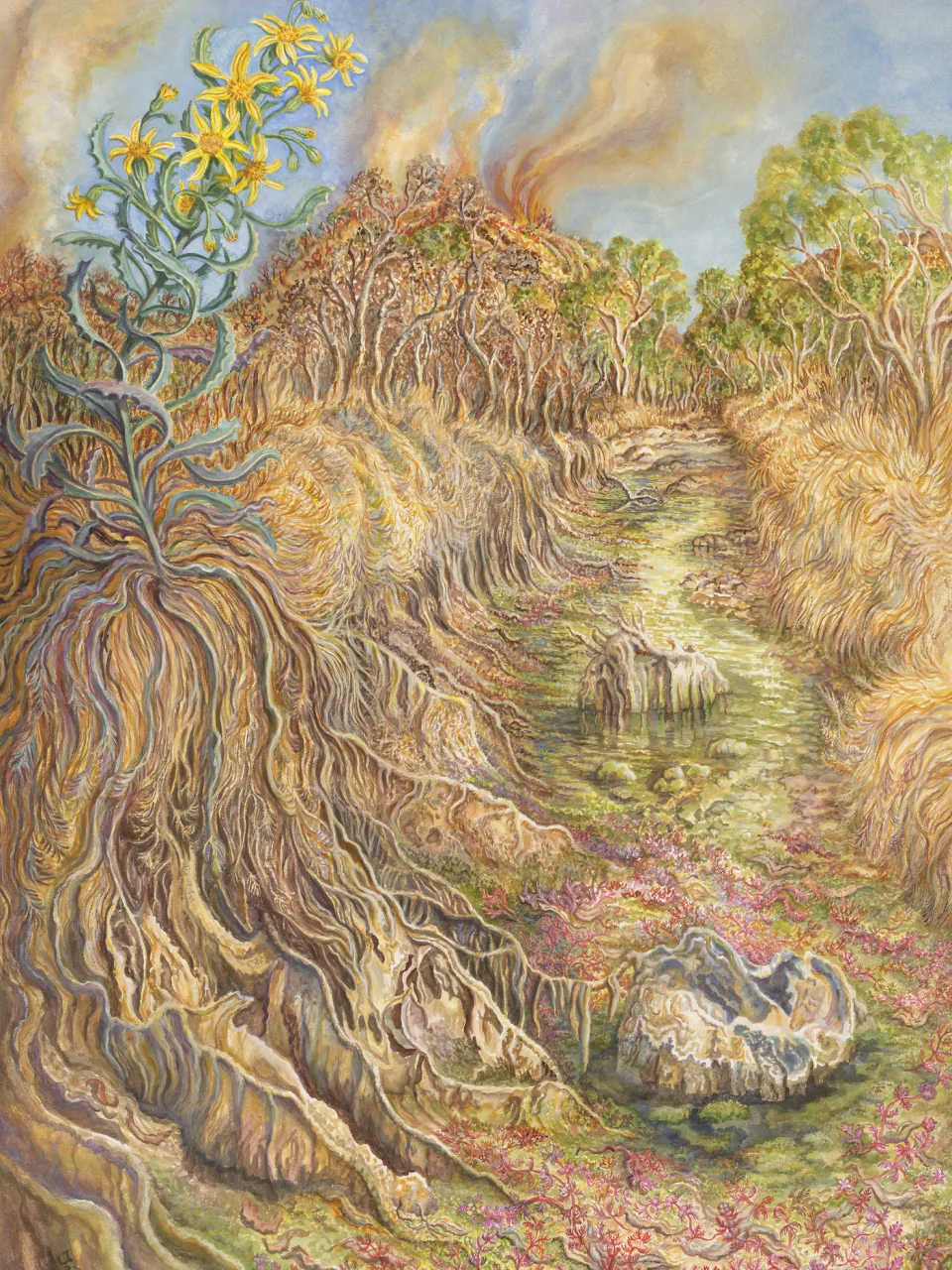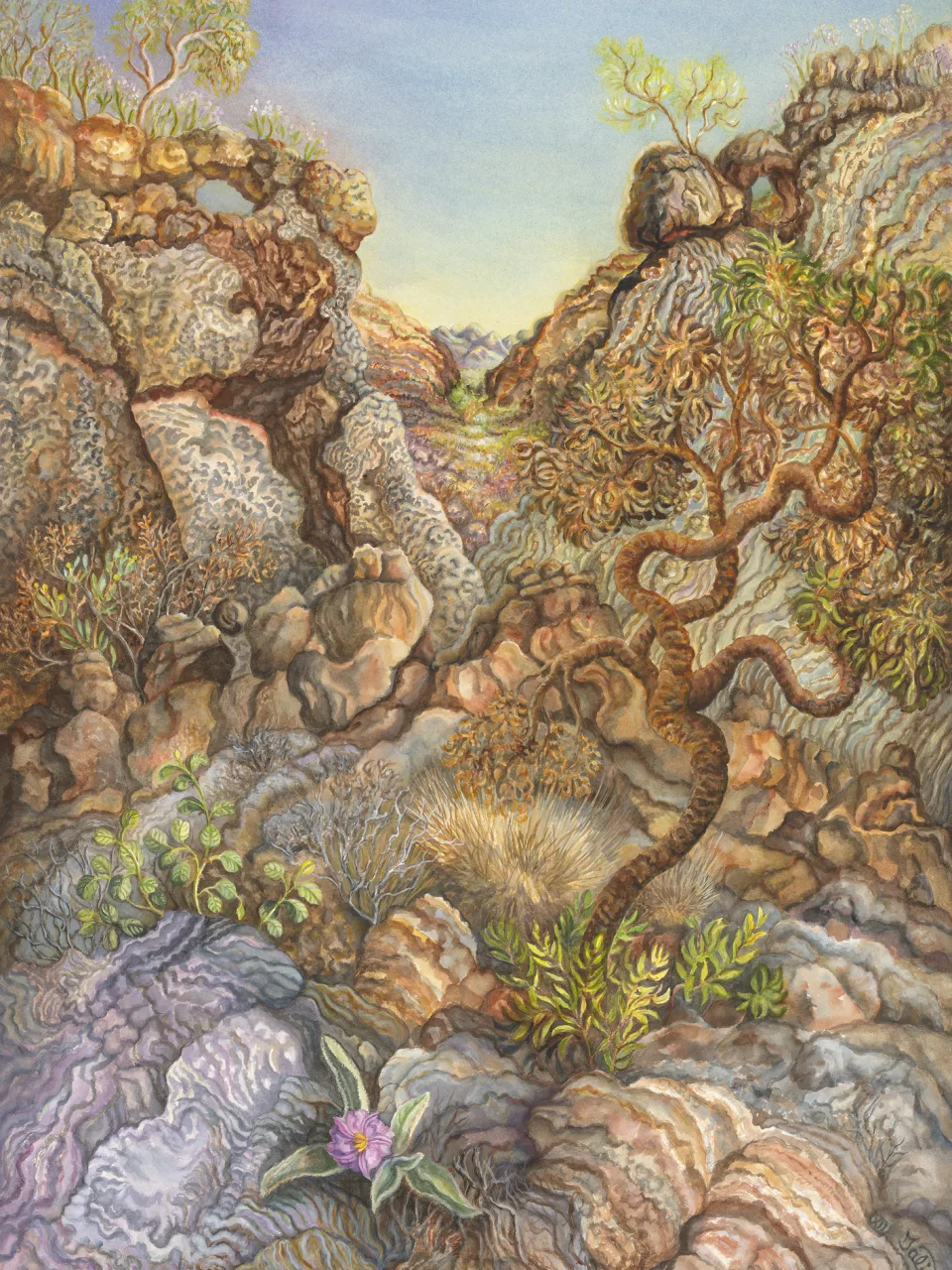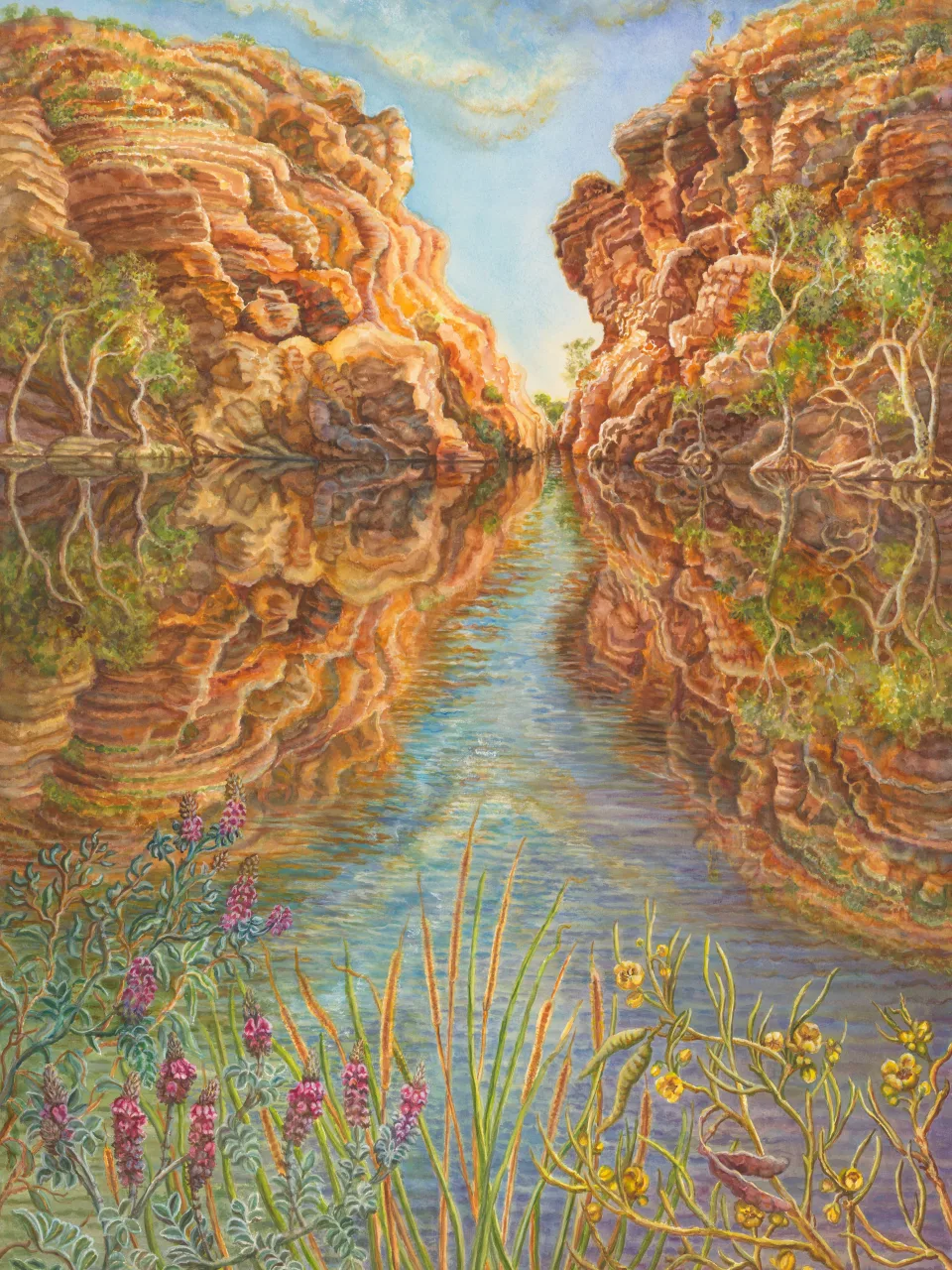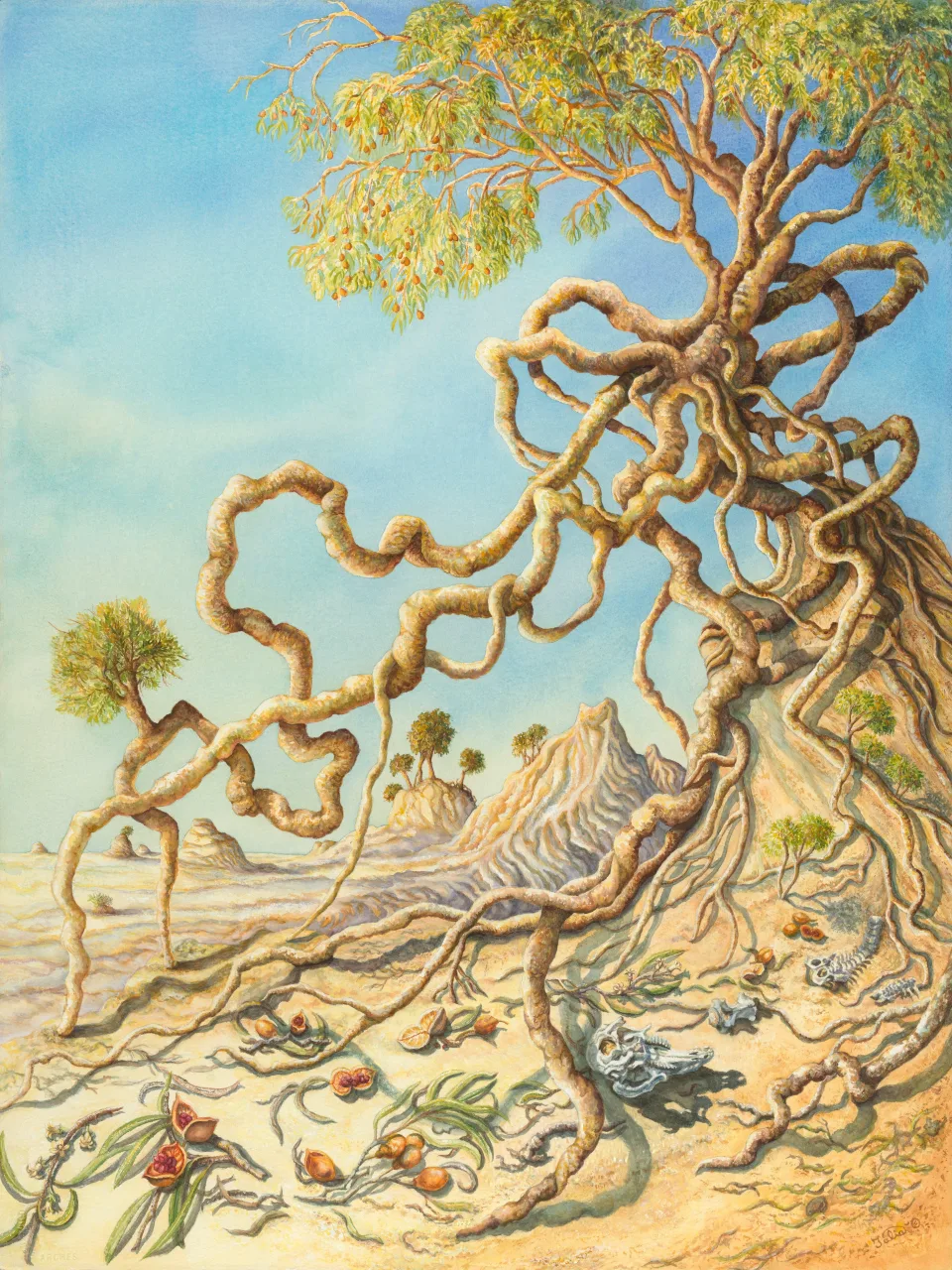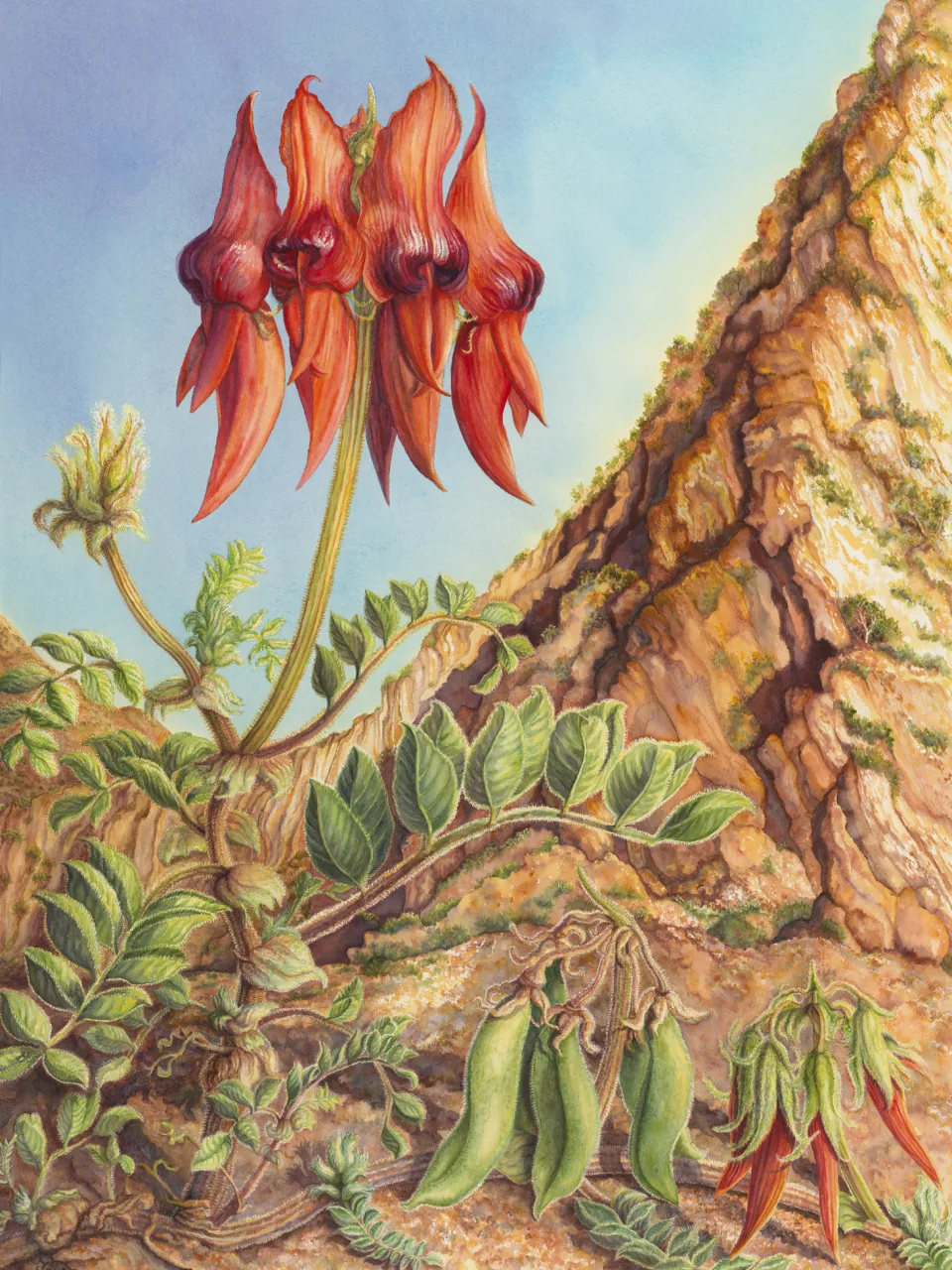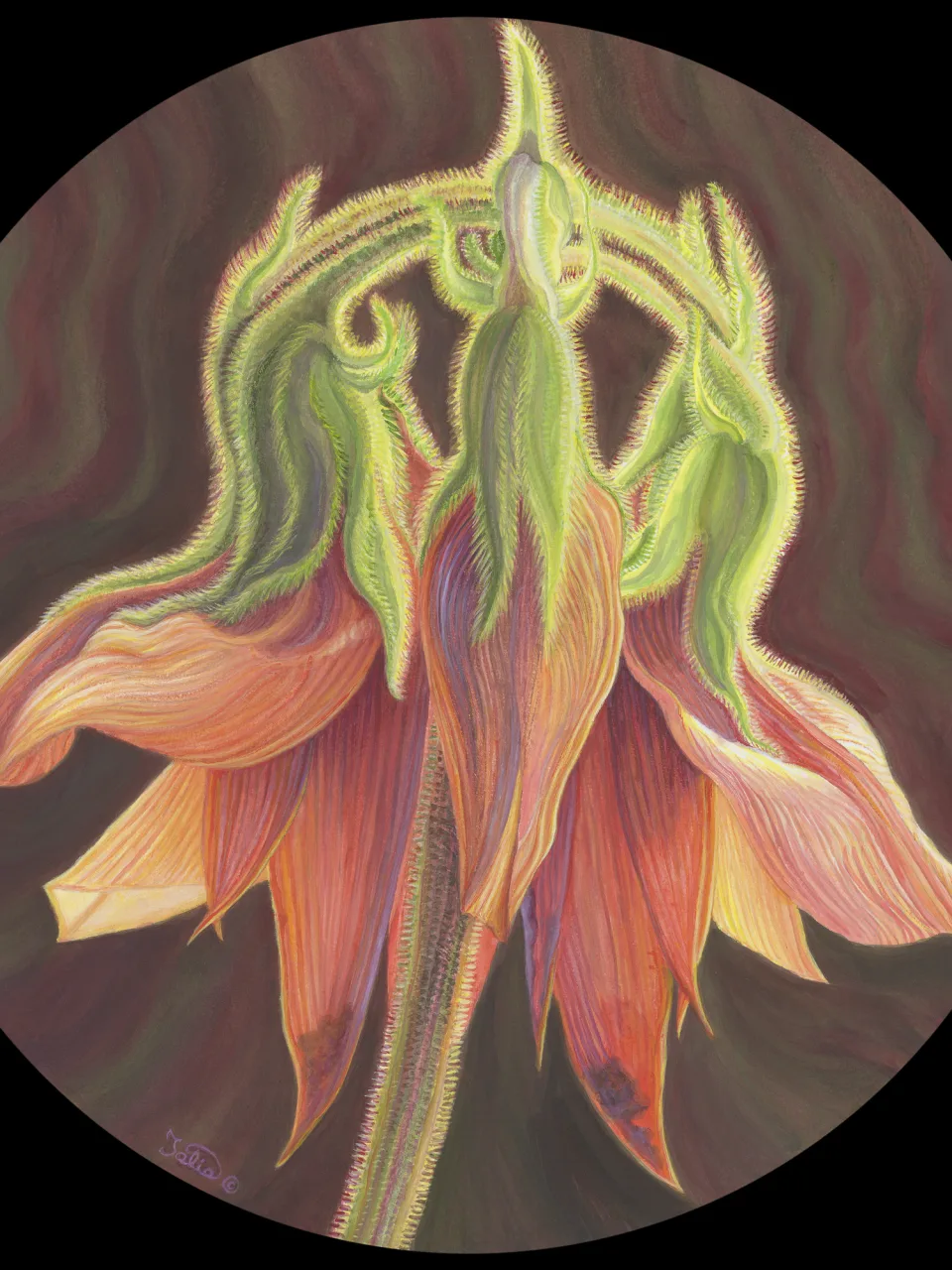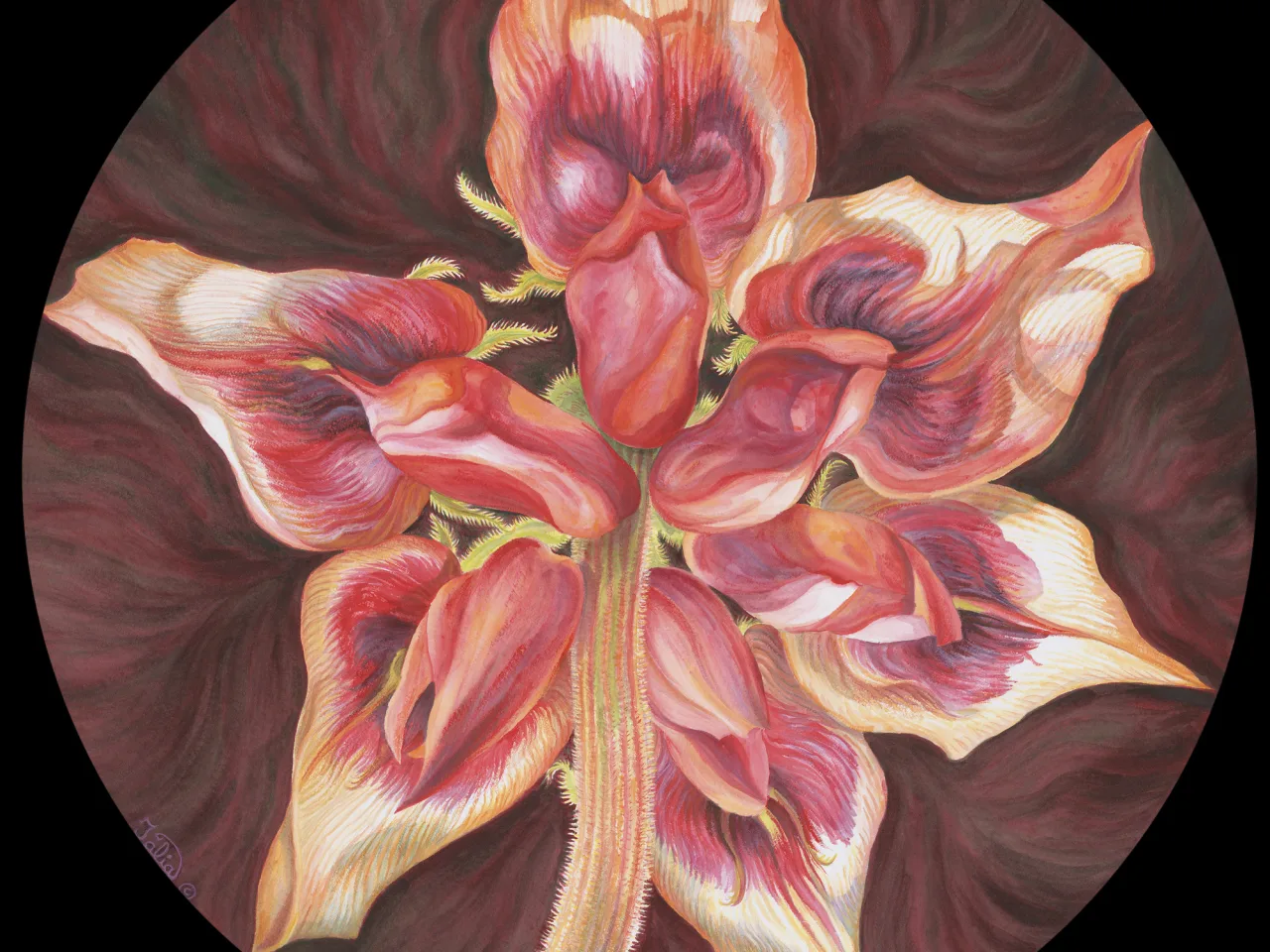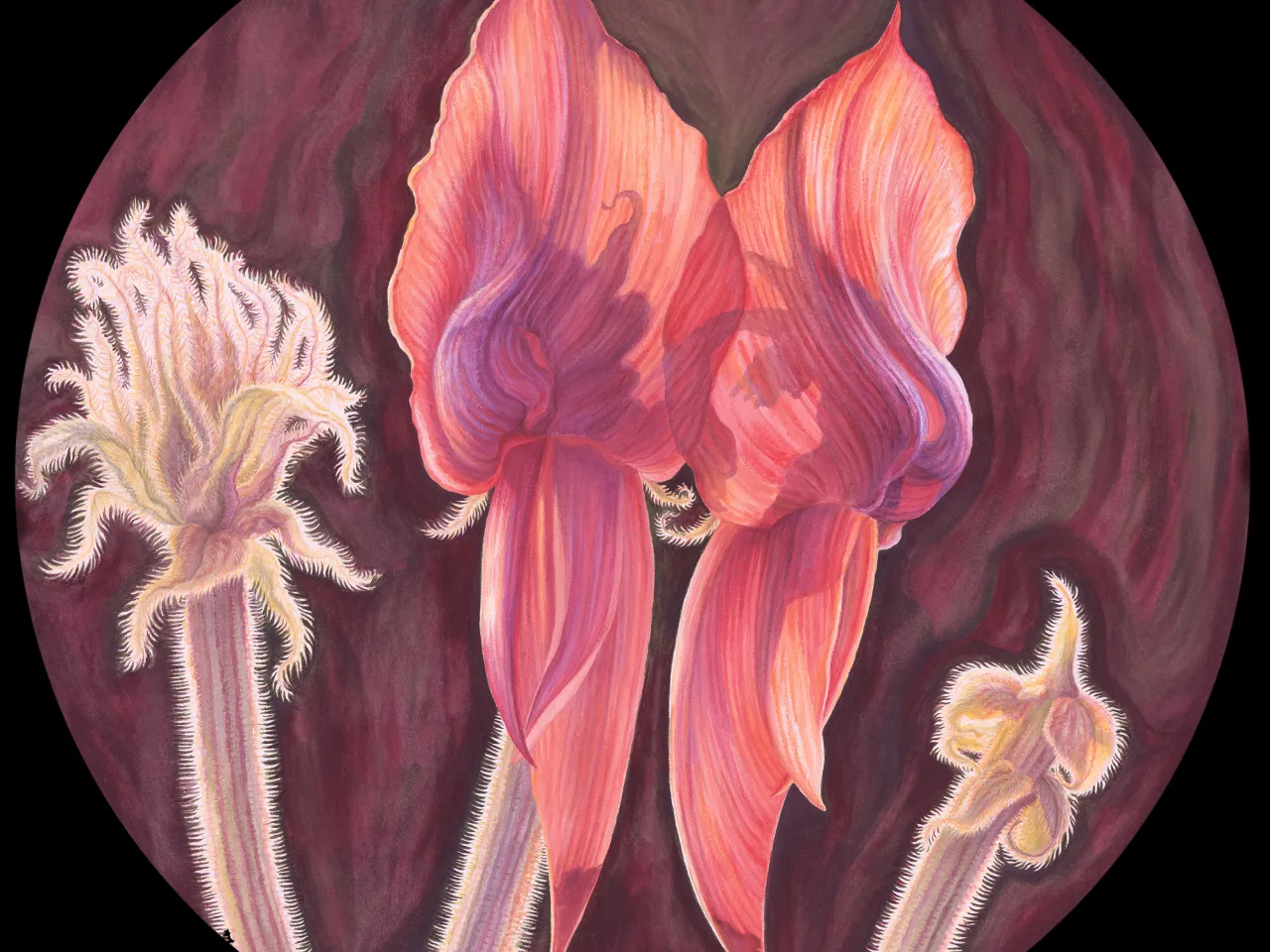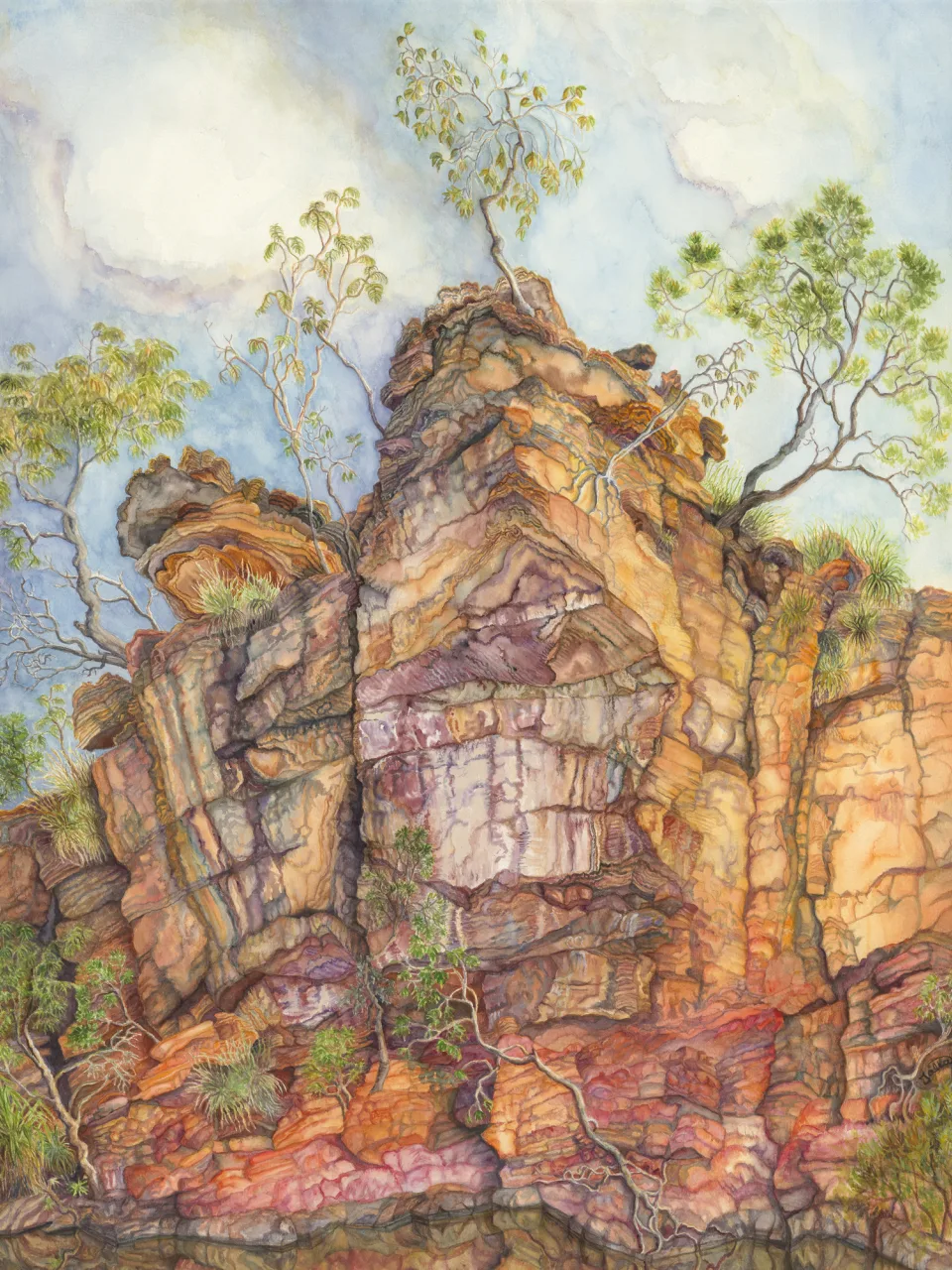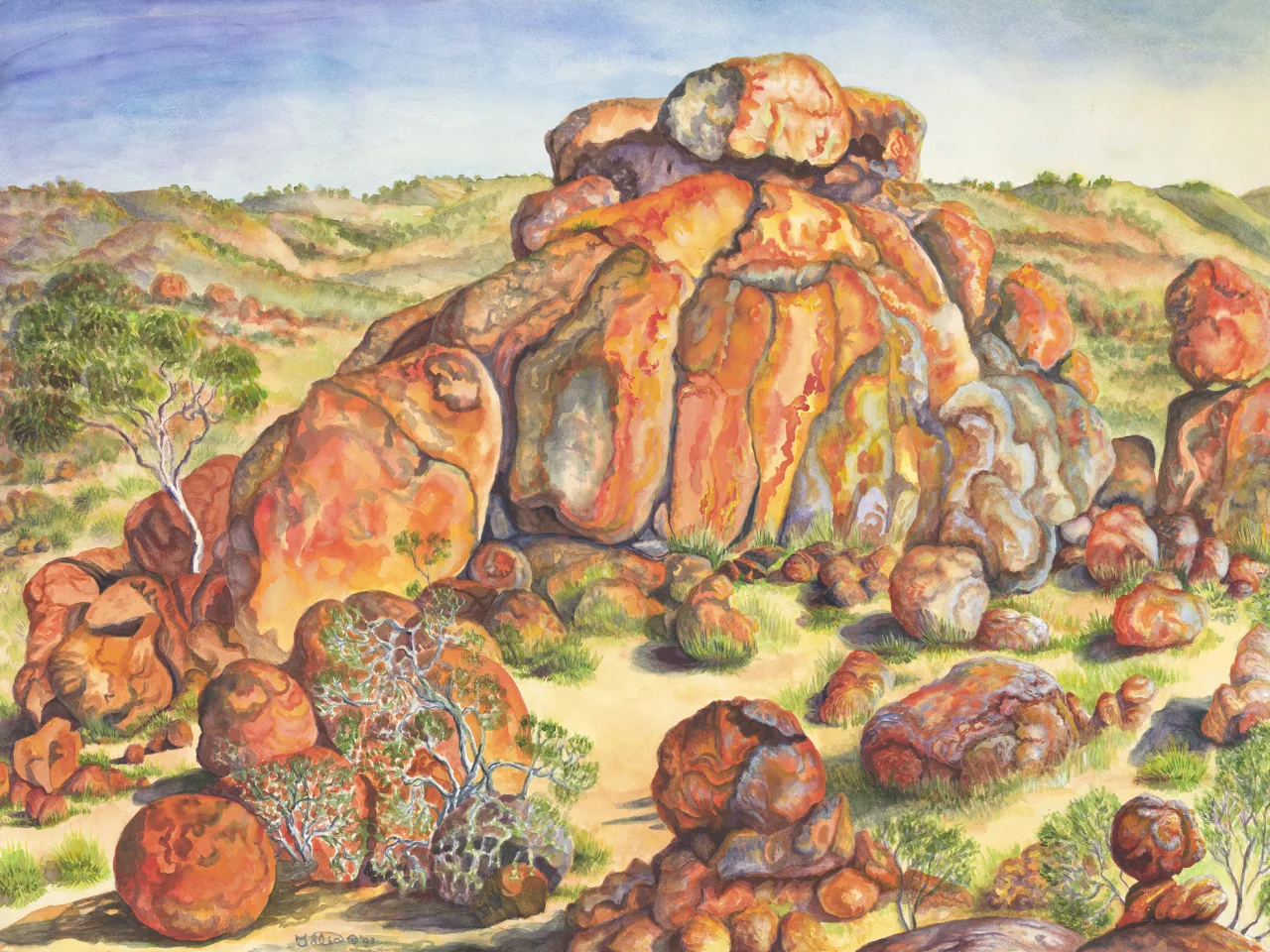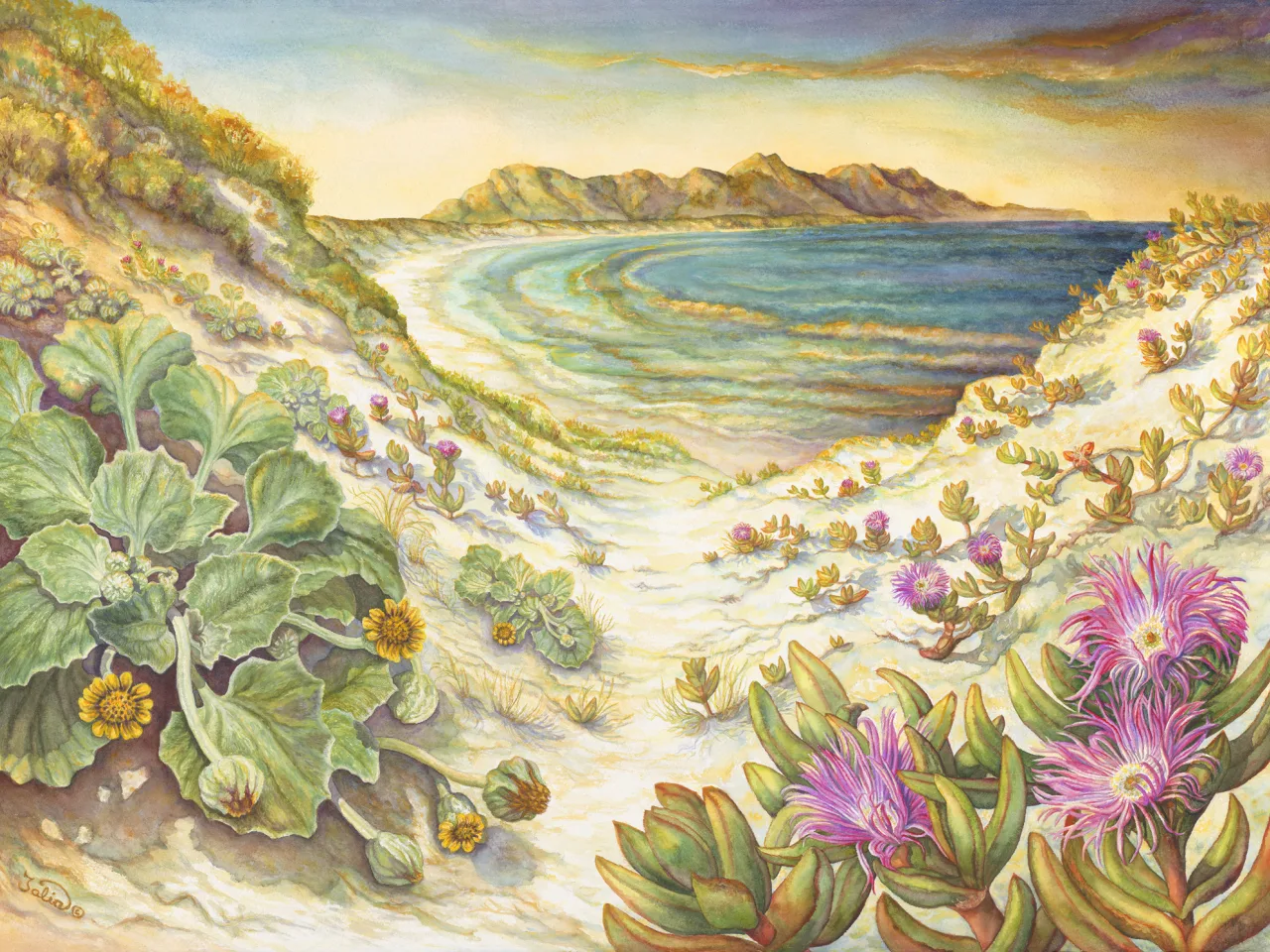Artwork 33 Hakea lorea at Simpsons Gap, Northern Territory
Section 22
The Fire-Embracing Proteas of Oz—Waratahs, Grevilleas, Hakeas, Banksias, and Isopogons
Simpson’s Gap, Tjorita / West MacDonnell National Park, Northern Territory, Northern Territory
- 1. Hakea lorea (long-leafed corkwood)
Artwork 33
Buy a print
Limited edition giclee archival quality print on 310 gsm Ilford cotton rag (from an original work in watermedia on watercolour paper, 105 cm high x 74 cm wide)
from the artist
Hakea lorea at Simpsons Gap, Northern Territory was mainly drawn on location while visiting the West MacDonnell Ranges, and then adapted and finished in the studio later. The hardy plant in the foreground of the painting can be found in a number of locations in the area, such as at Trephina Gorge in the East MacDonnells. The plant has been renamed to Hakea lorea subsp. lorea (a bit of a mouthful—I rather liked the old name suberea!). The common name “long-leafed corkwood” is quite apt, as the narrow upright leaves are very long and narrow (and pointed, on the plant I painted), and the furrowed bark was quite thick and “corky”.
Our first encounter with this hakea was when we crossed the South Australian border into the Northern Territory in the early 1990s. The vista before us was of an arid desert scene with red ochre earth, scattered clumps of spinifex, and an occasional straggly acacia, as far as the eye could see. But suddenly—as if planted here to demonstrate that the desert could bloom—was a profusely flowering long-leafed corkwood (Hakea suberea) covered with lovely creamy flower spikes; “welcome to the N.T.”! Many years later, in 2002, I finally painted our “welcome tree”.
Hakeas are endemic to Australia, and are especially varied in the South-West of Western Australia, in well-drained soils, which can range from deep sand to granite to gravelly laterite. In the eastern states, they can be found in heath or on sandstone, as around Sydney and the Central Coast (Gosford) area. Some grow in swampy environments, but not in rainforests, unlike grevilleas. Most grevilleas have thin-walled or leathery fruits, whereas hakeas have hard, woody fruits. They have evolved with fire, with two basic strategies for survival (Wrigley & Fagg, 1989/1991, p. 354–355). Some have lignotubers—thickened rootstocks which can reshoot after a fire—while others protect their seeds in woody coverings until a fire destroys the plant. The follicles then open to release winged seeds, which germinate with first rains. They are arid zone specialists!
